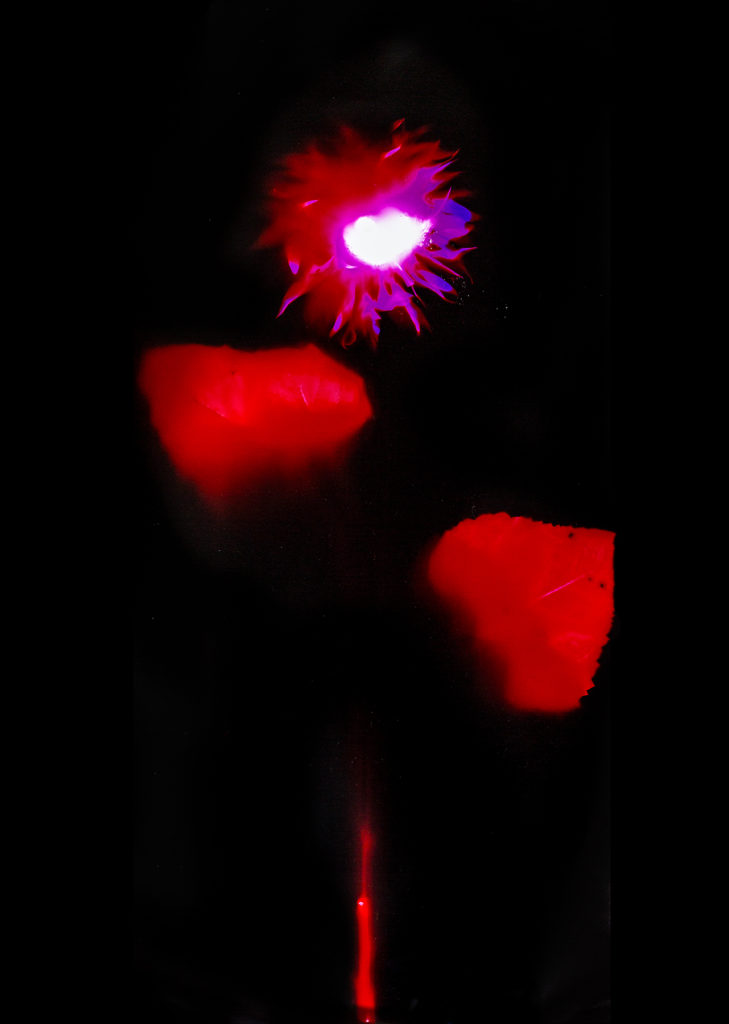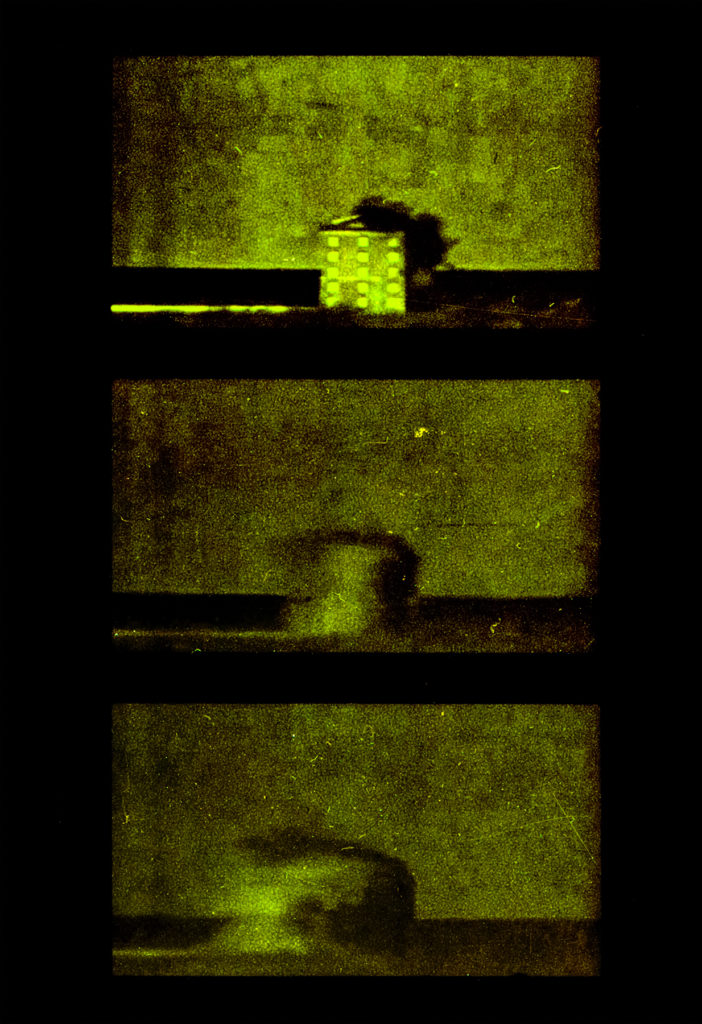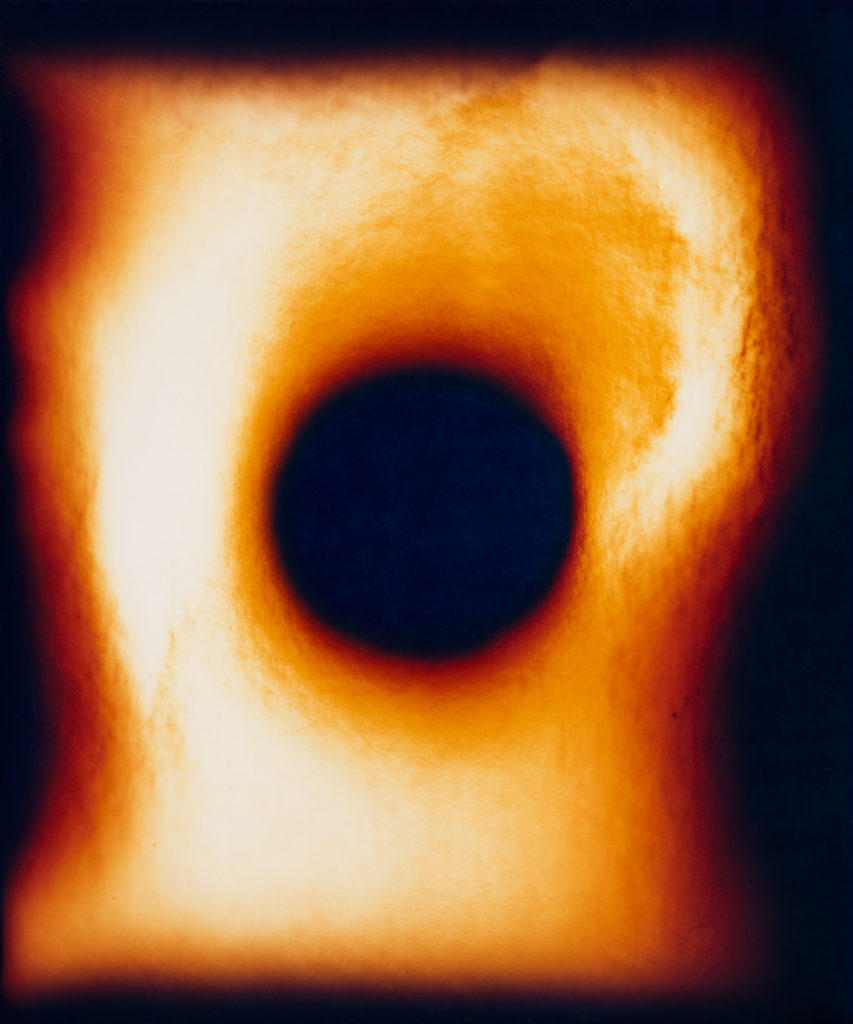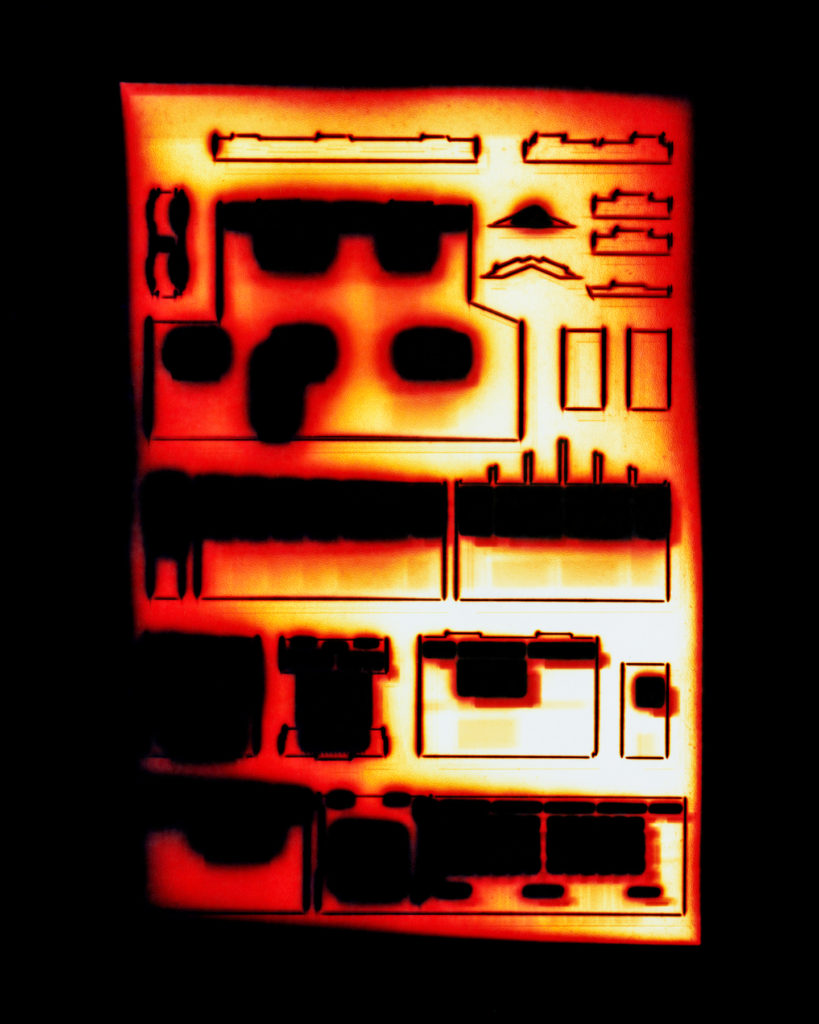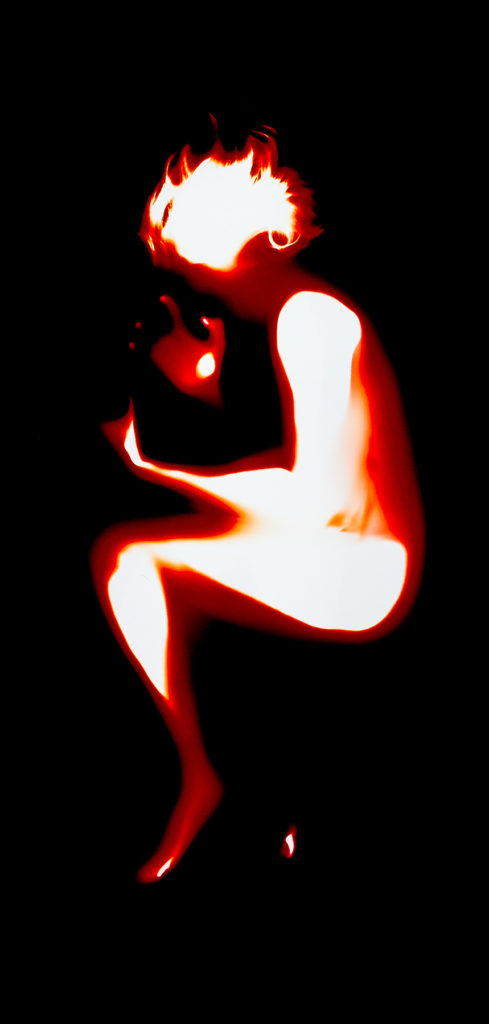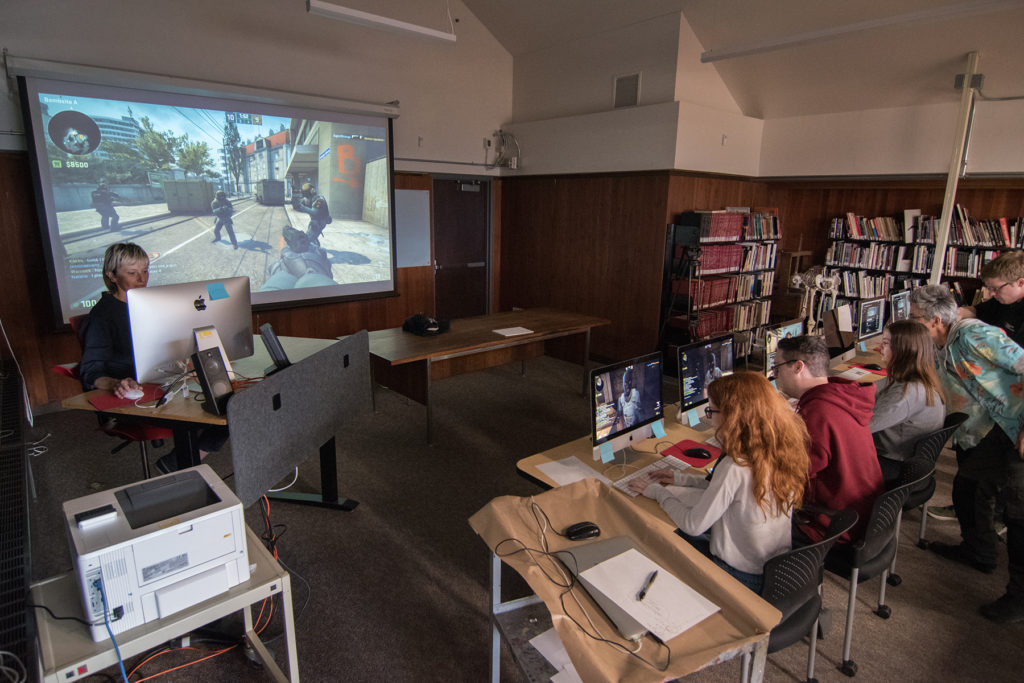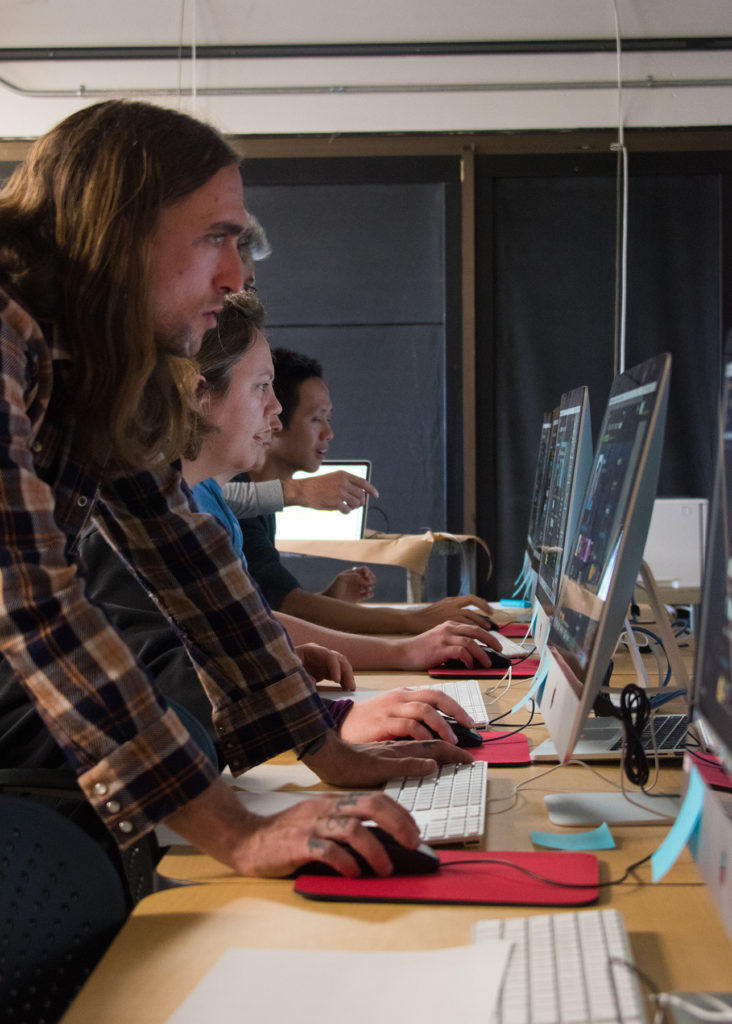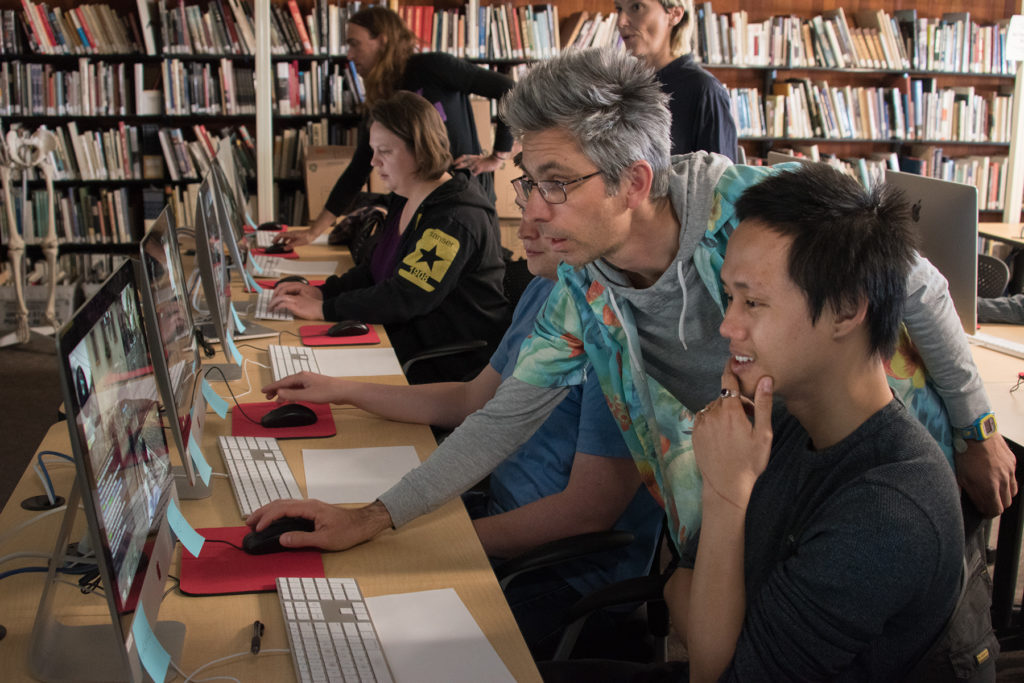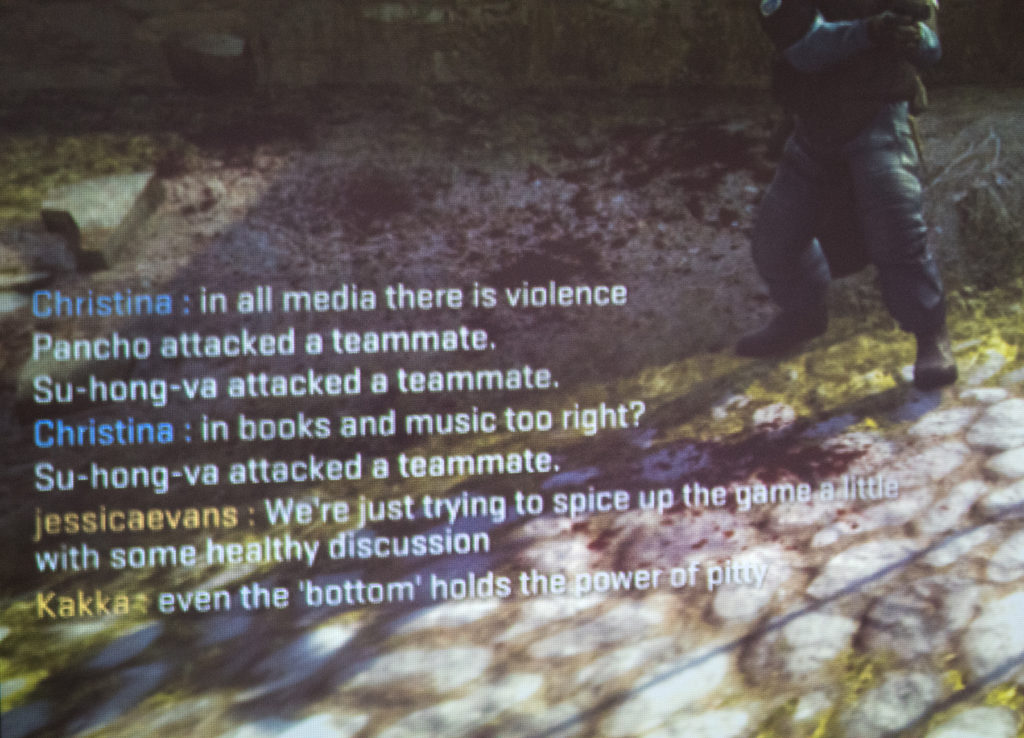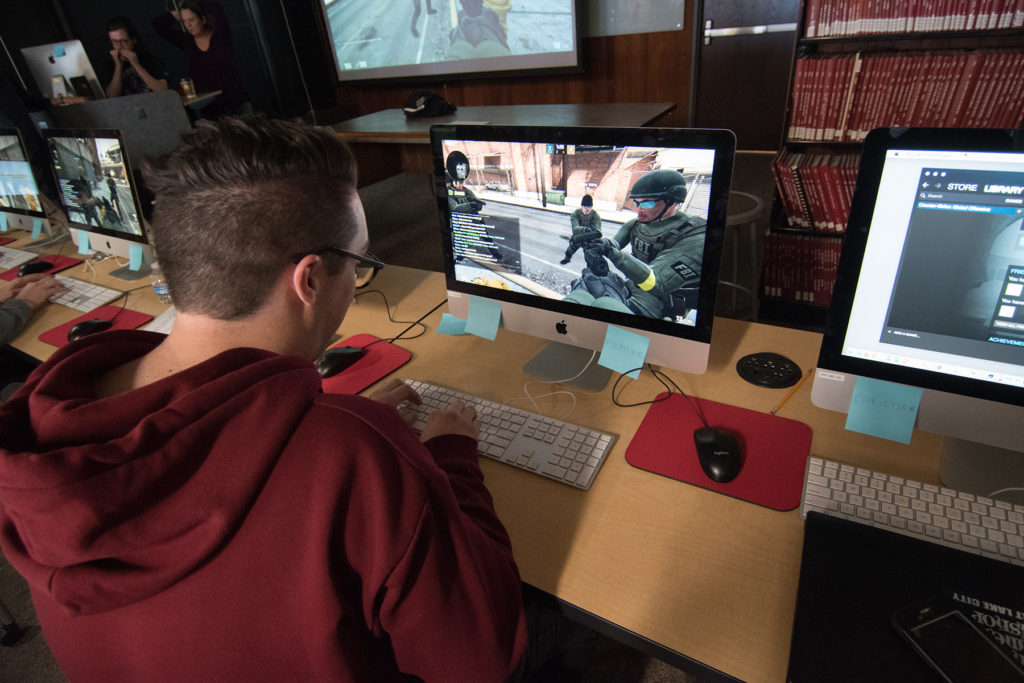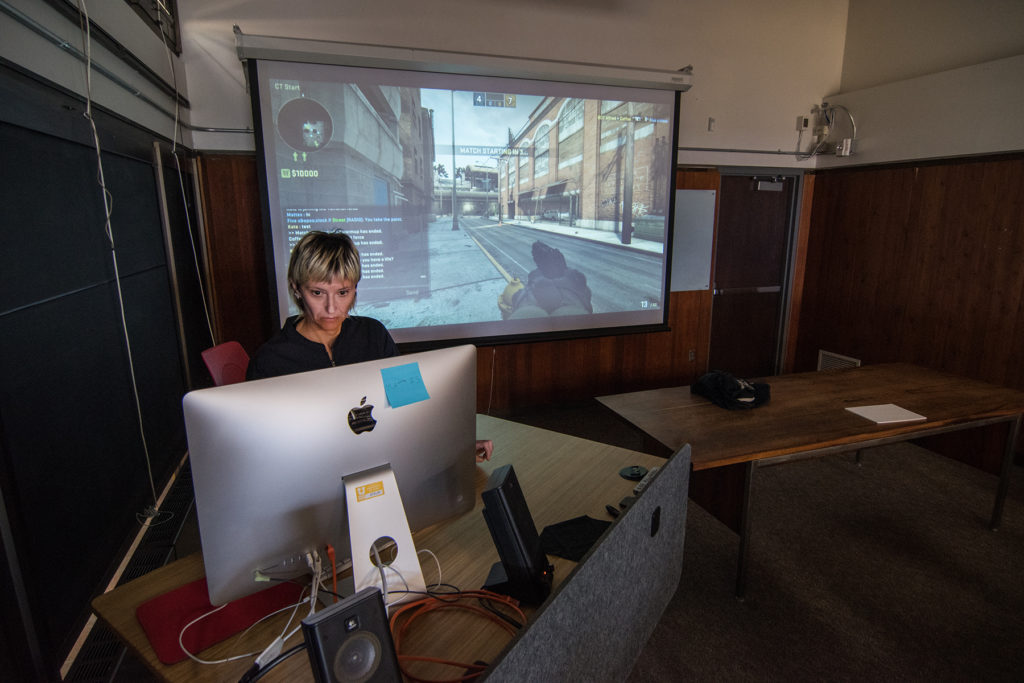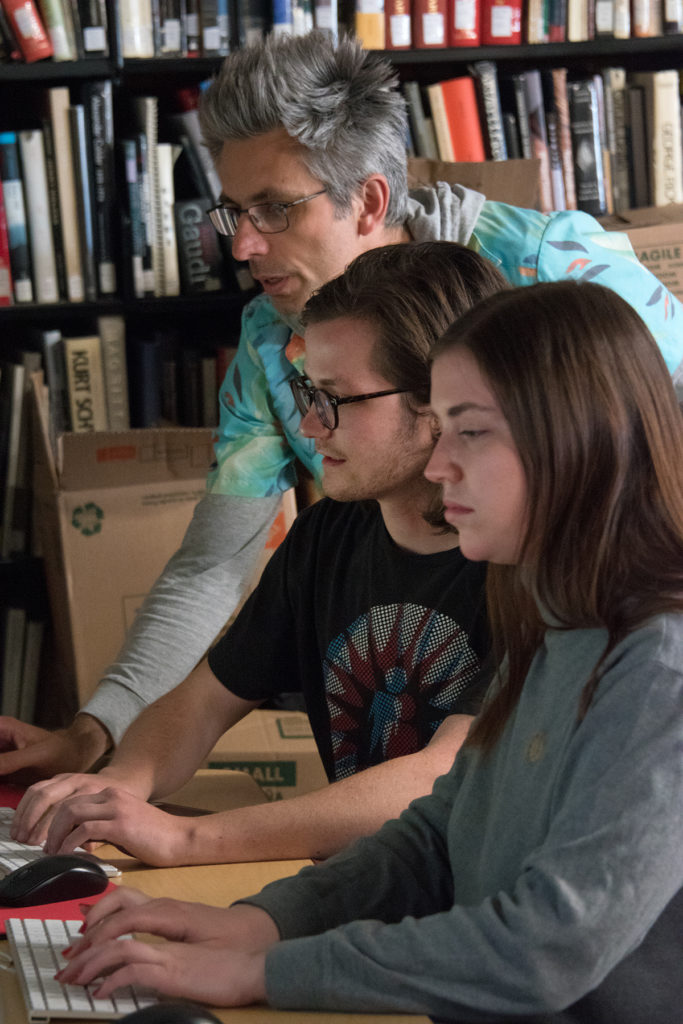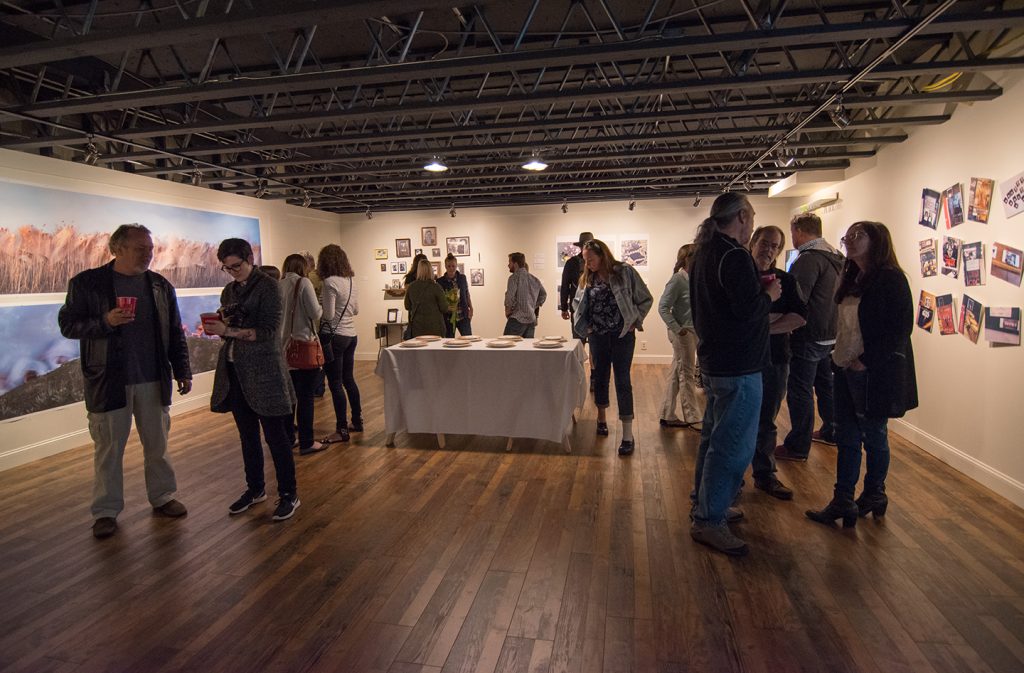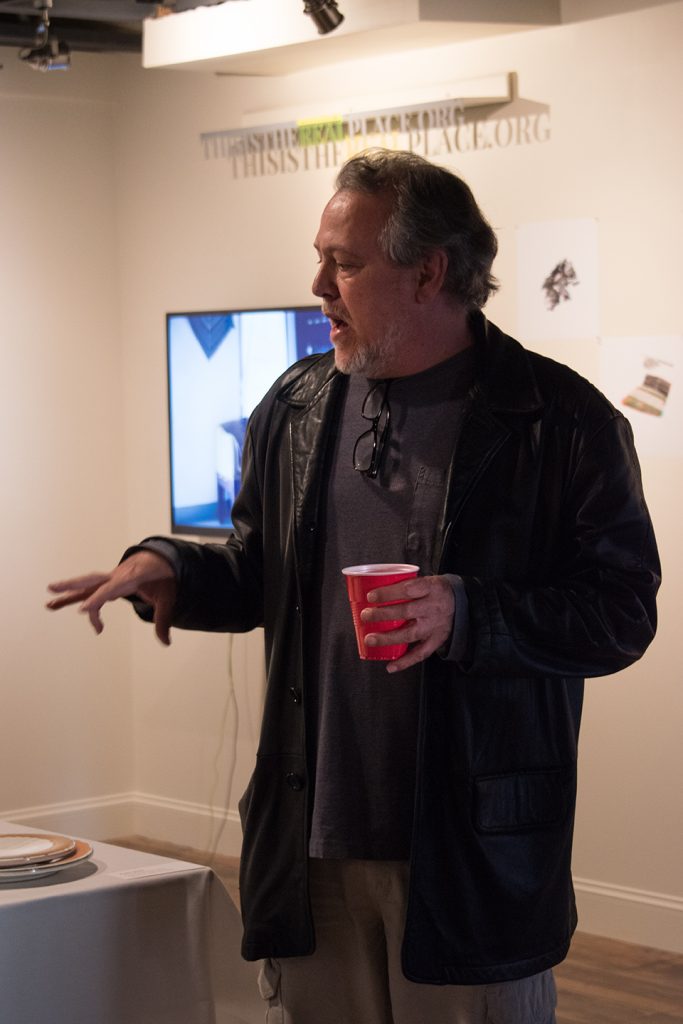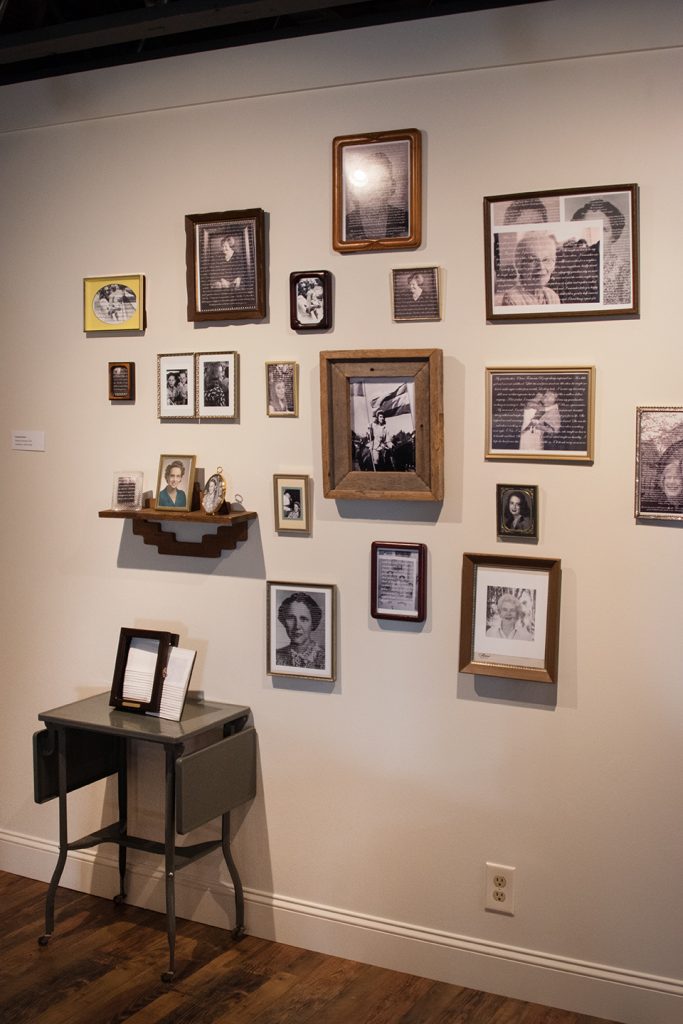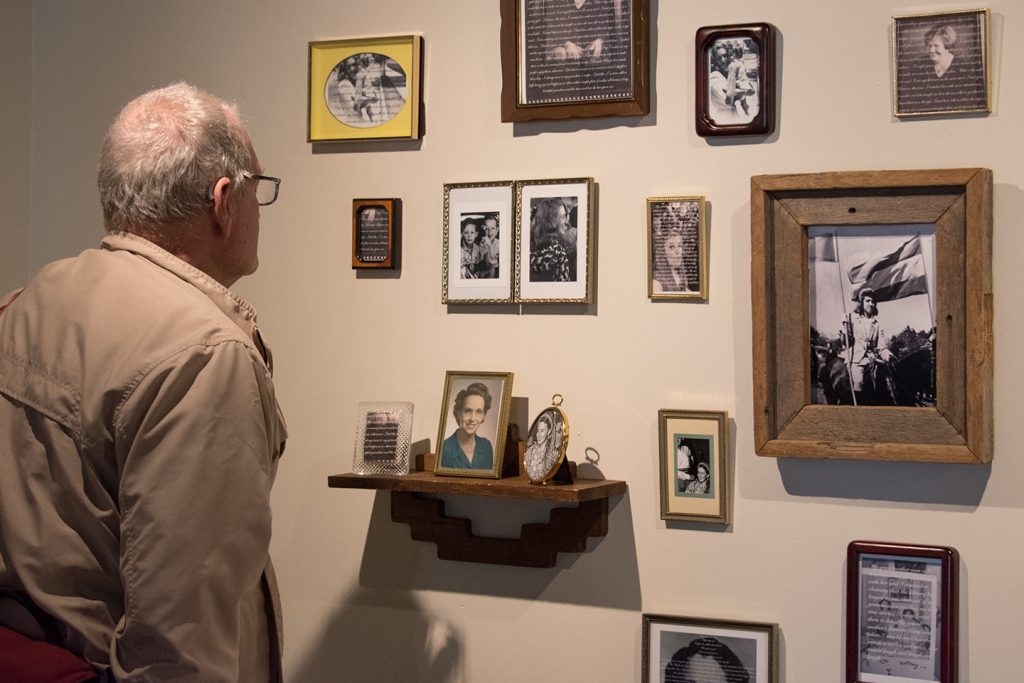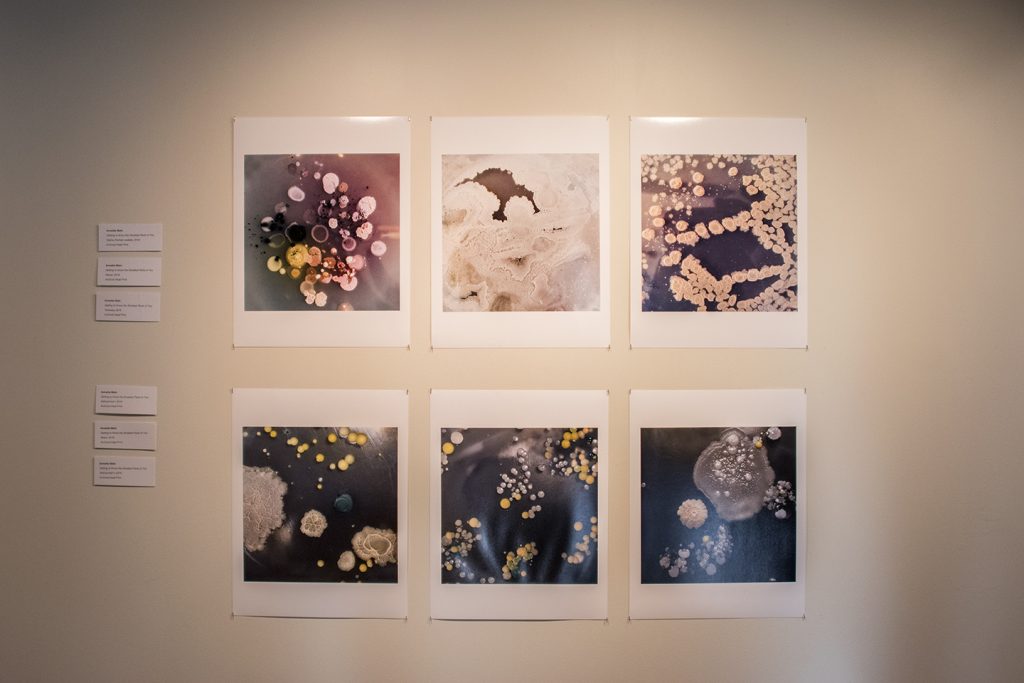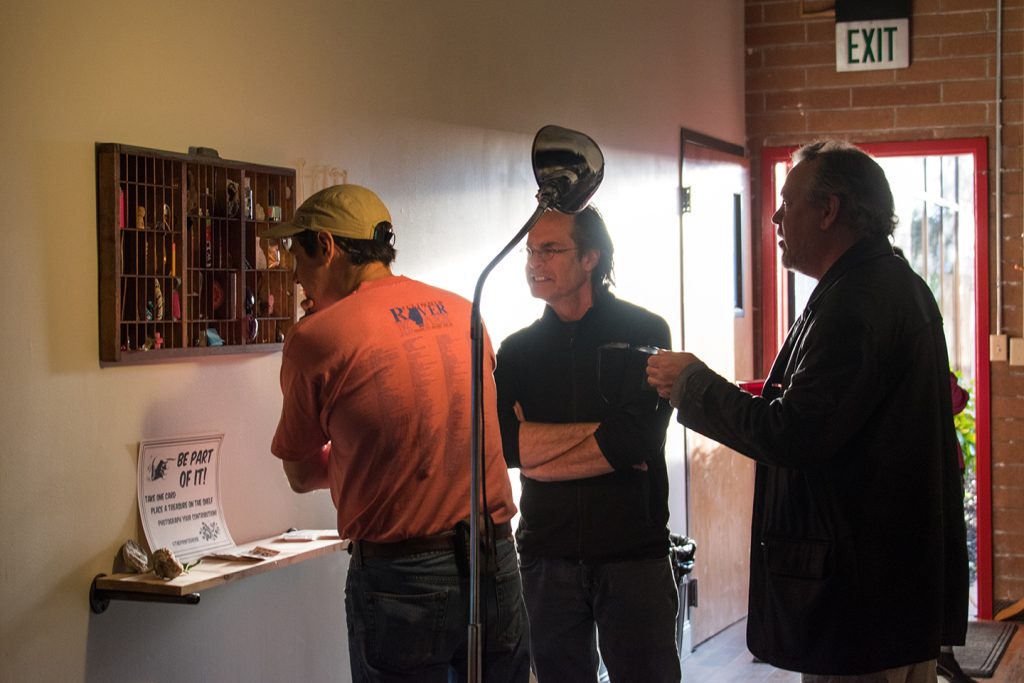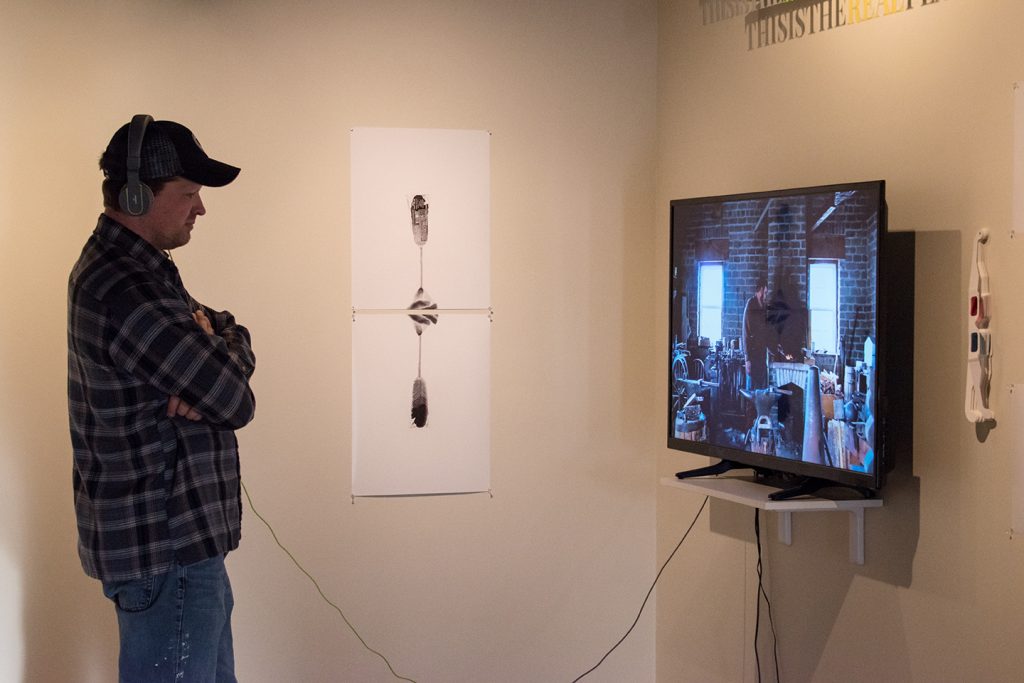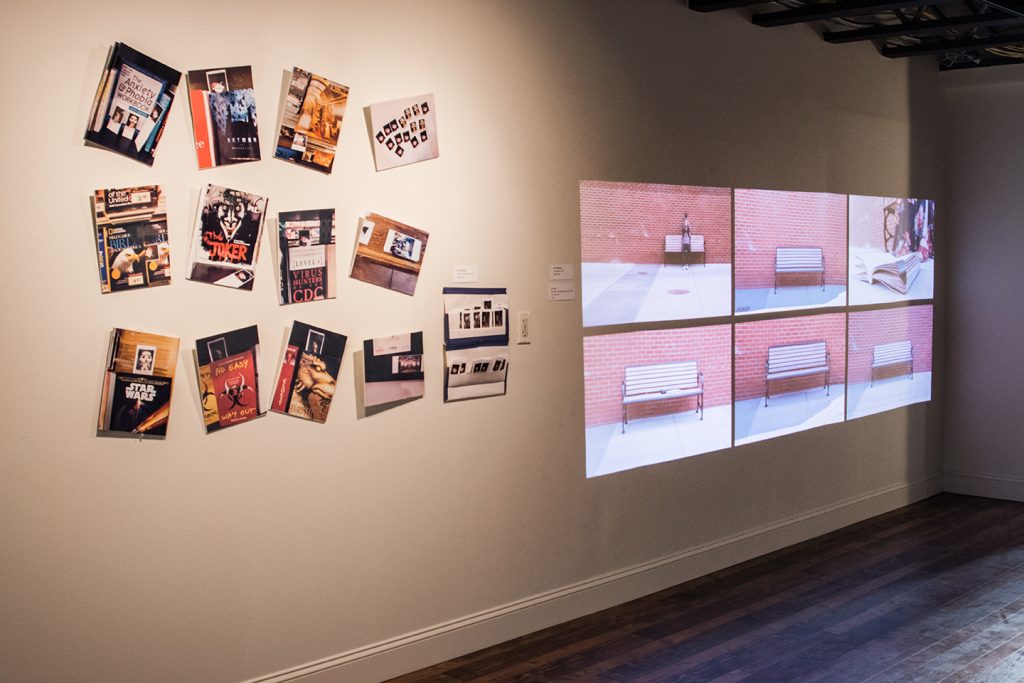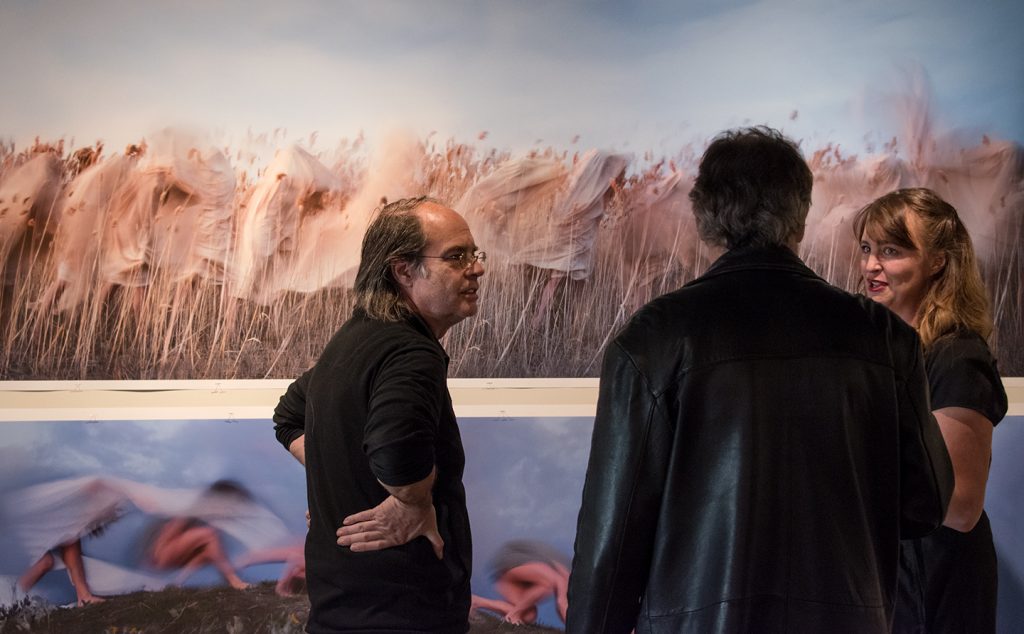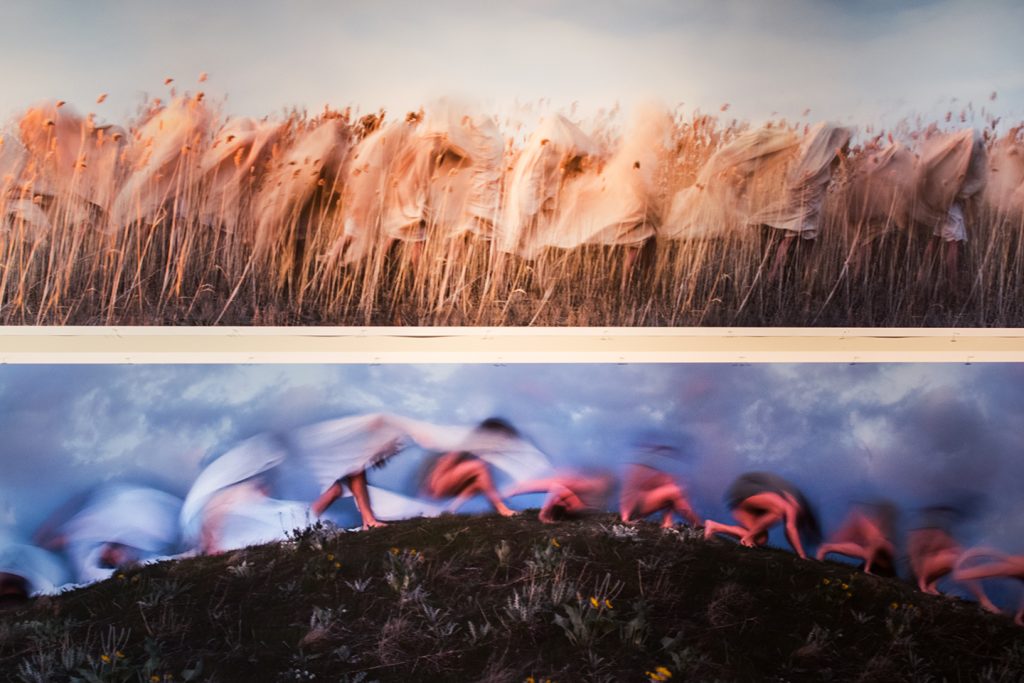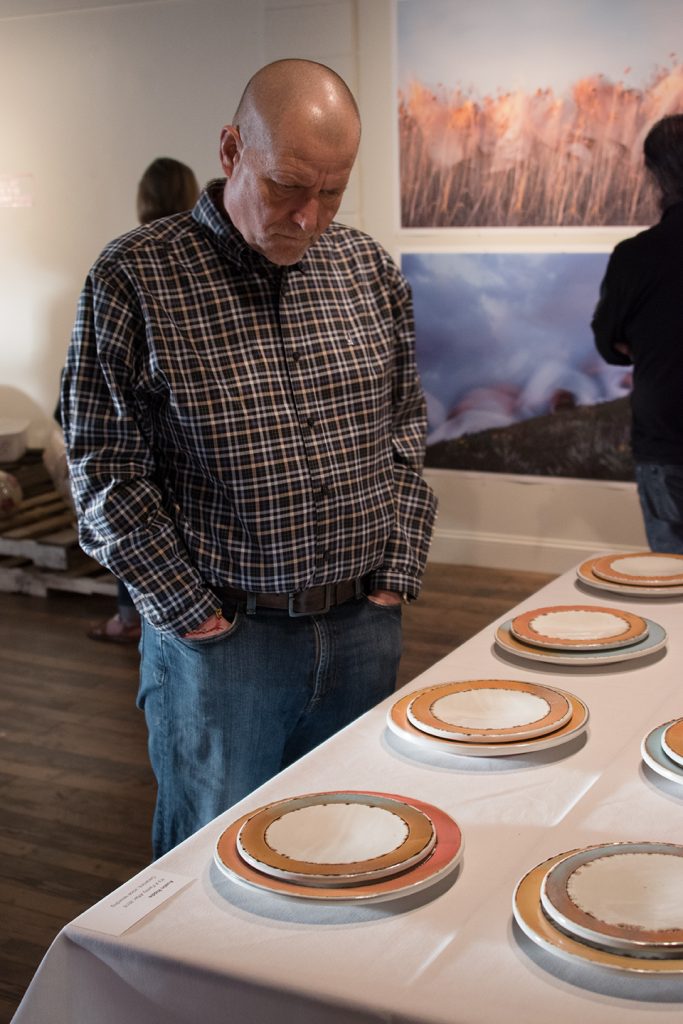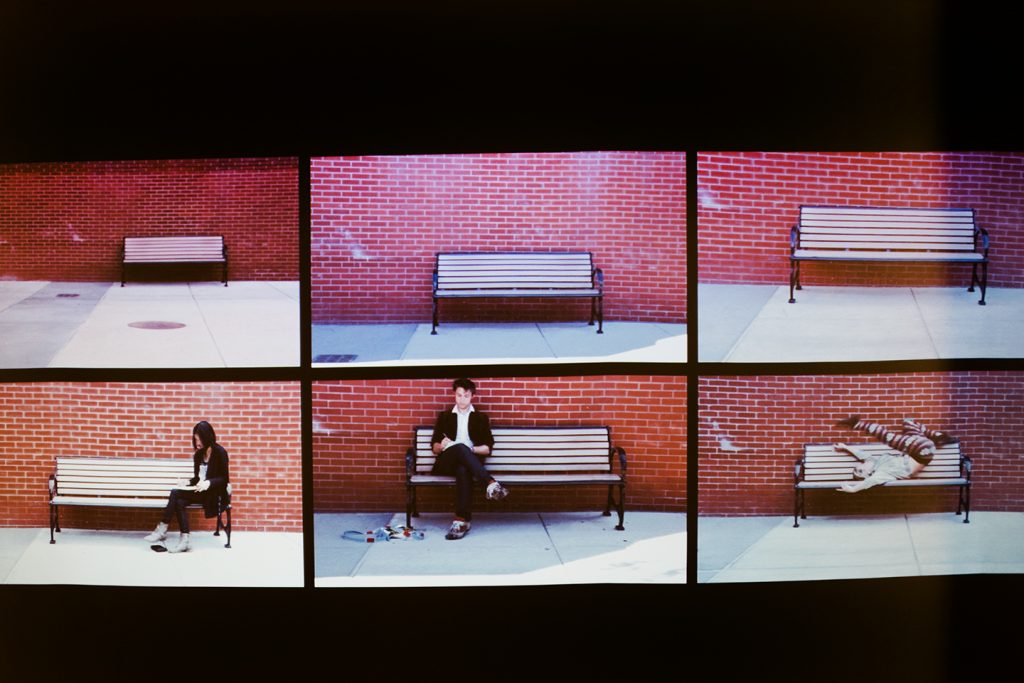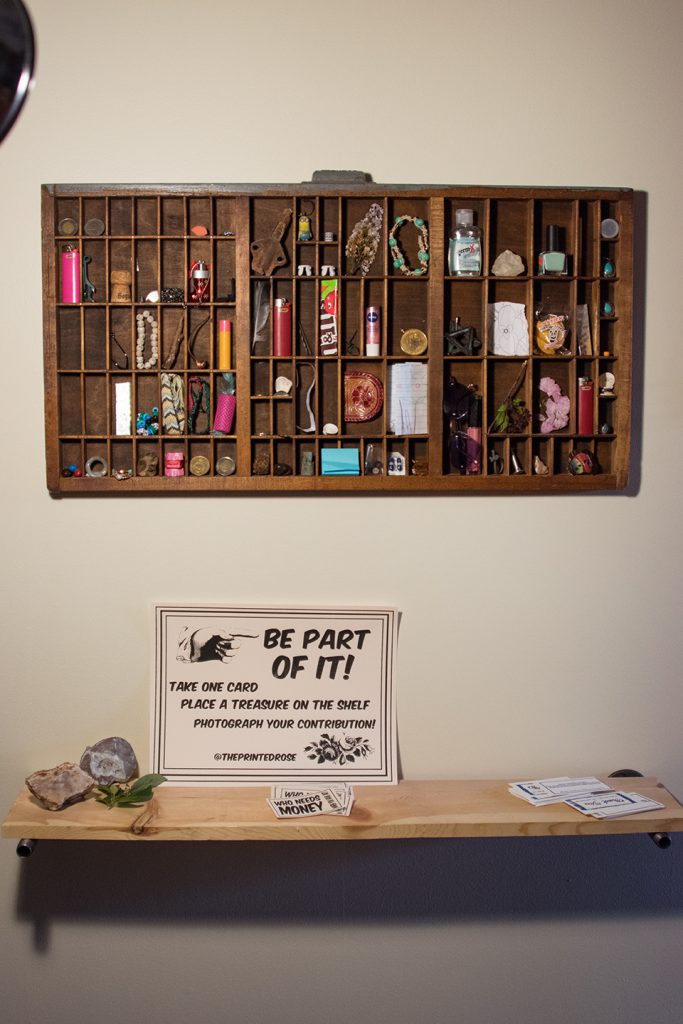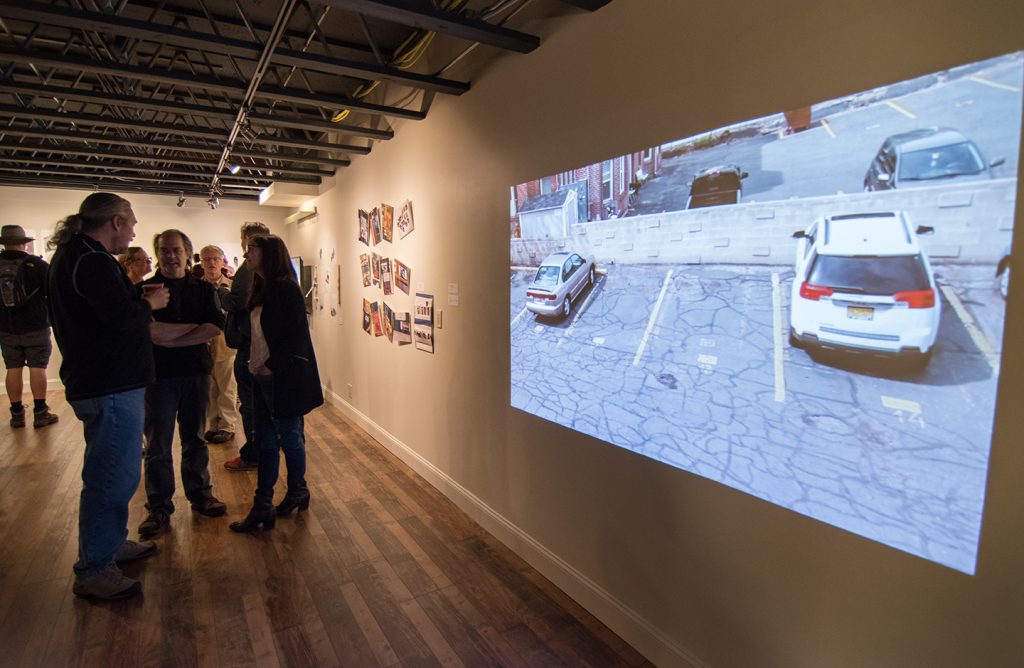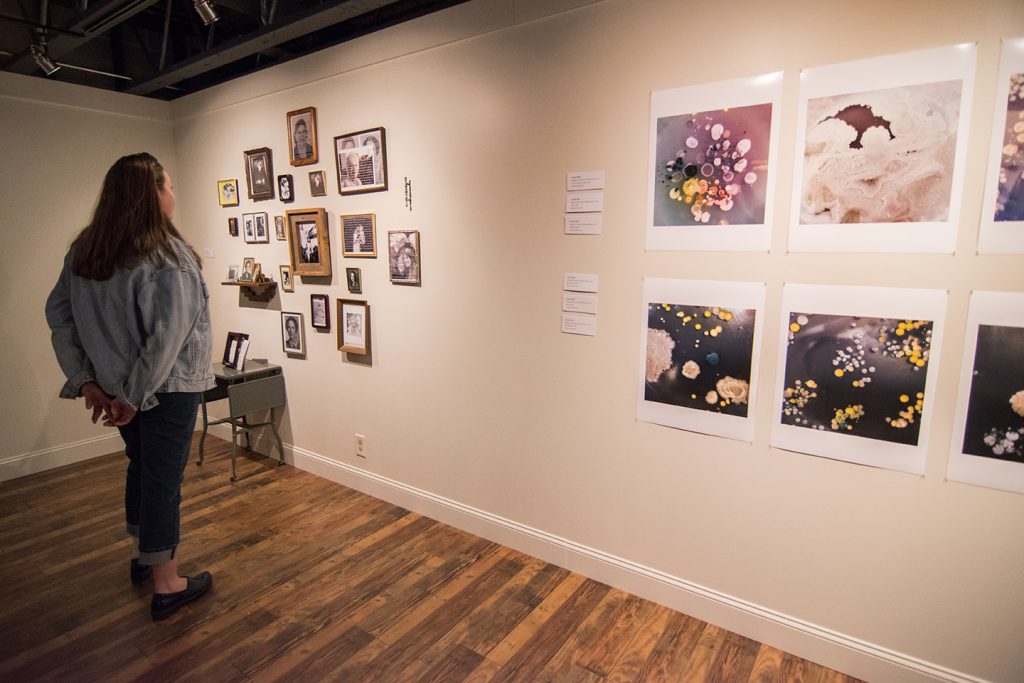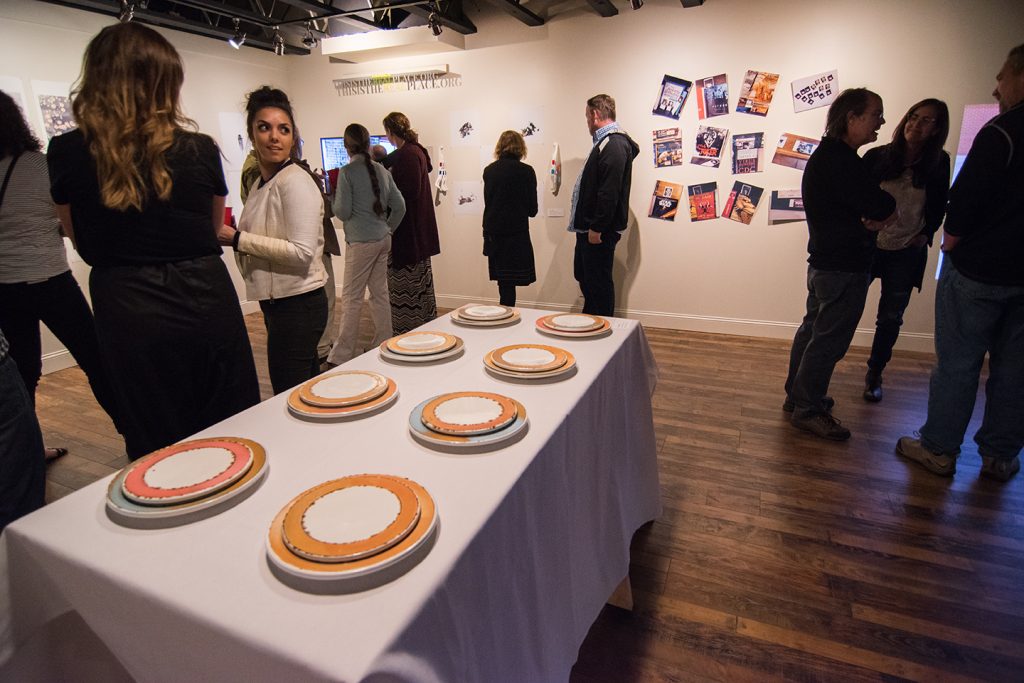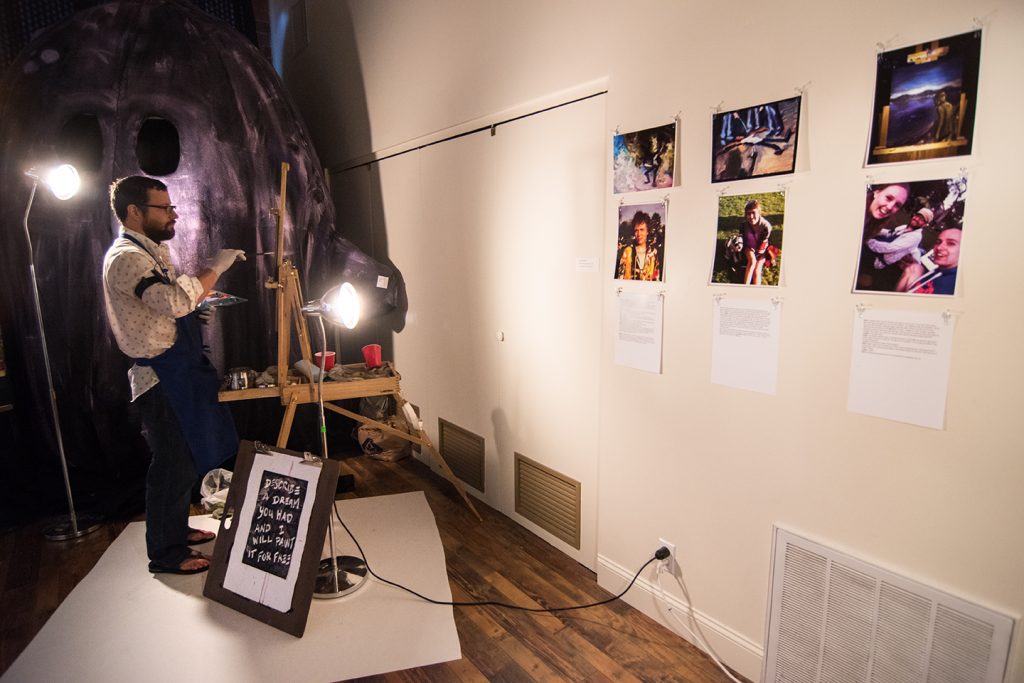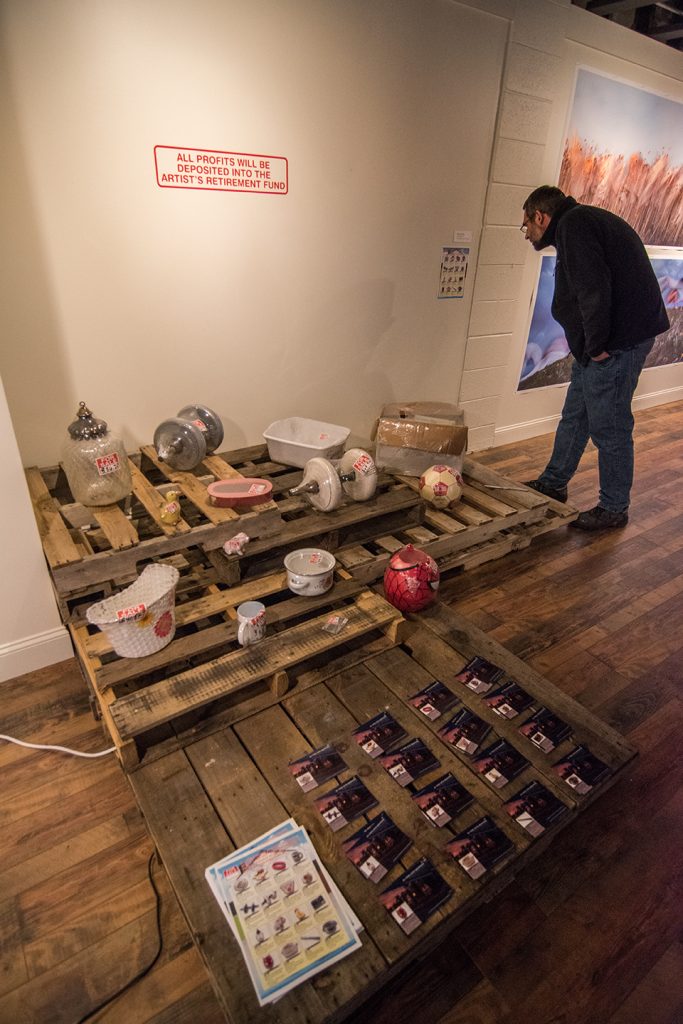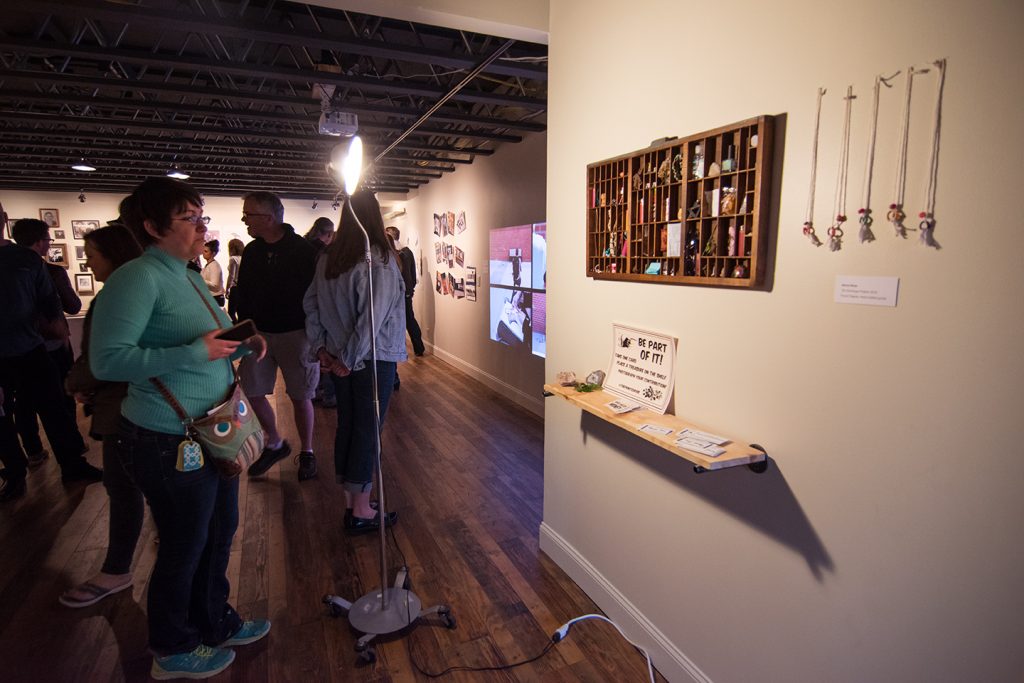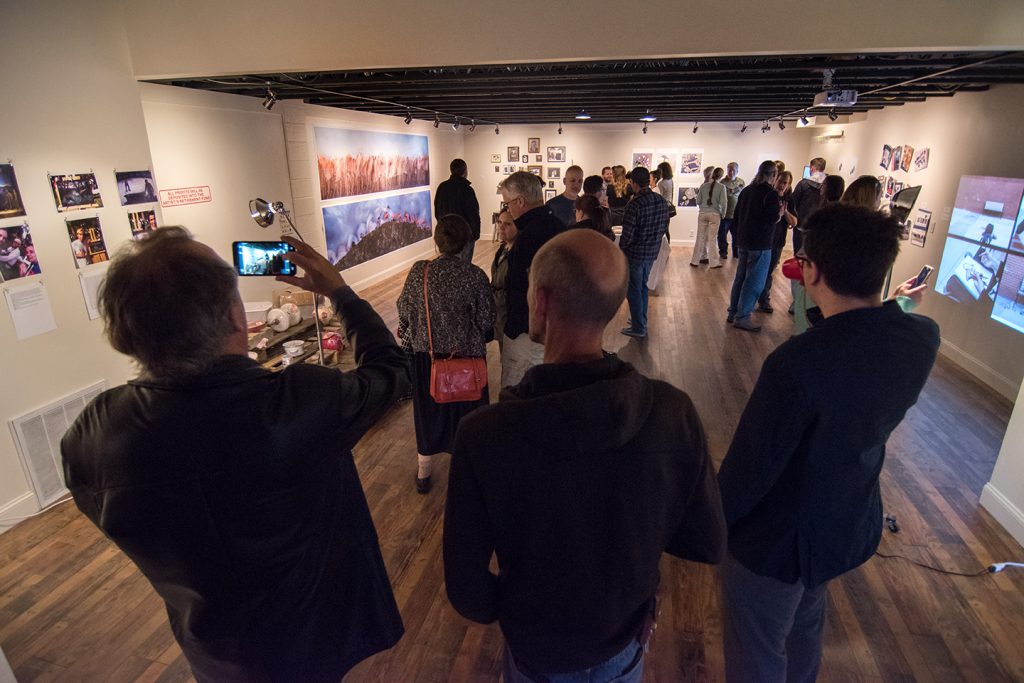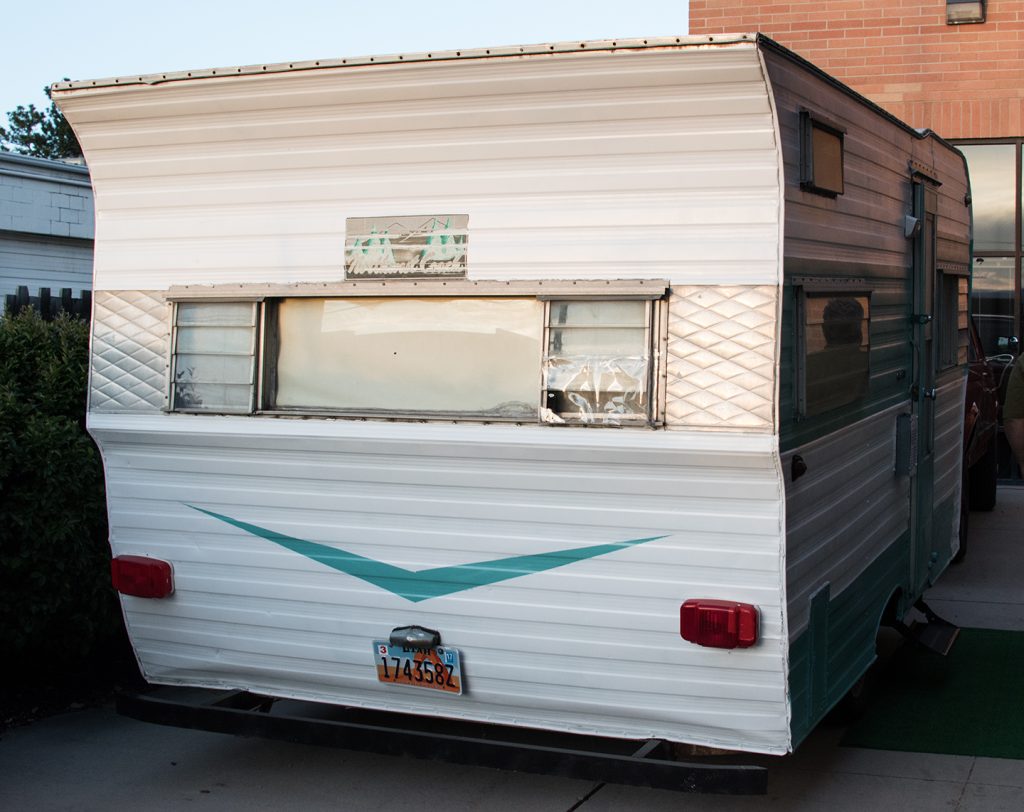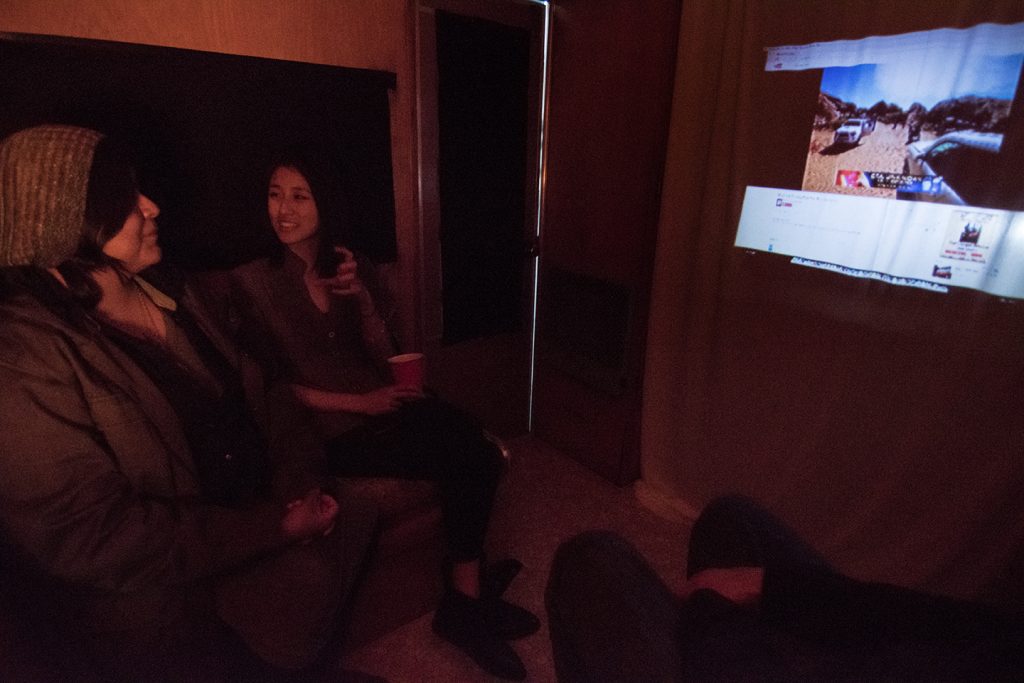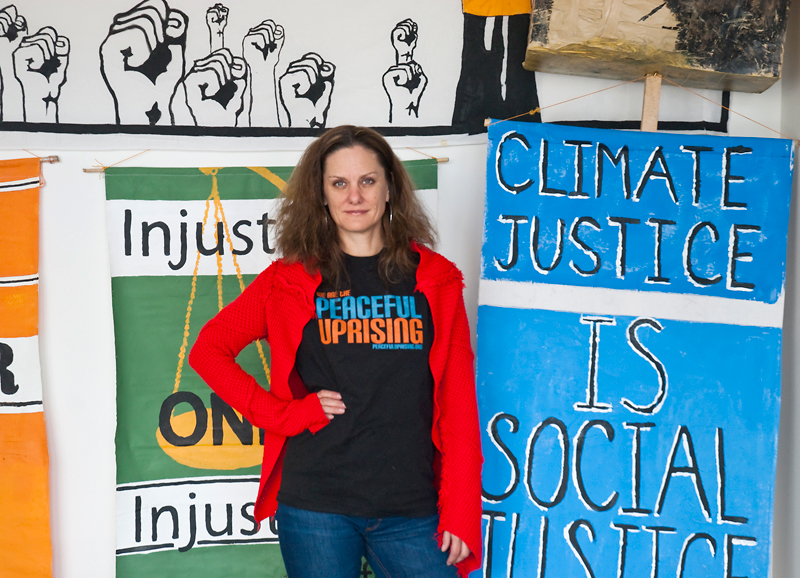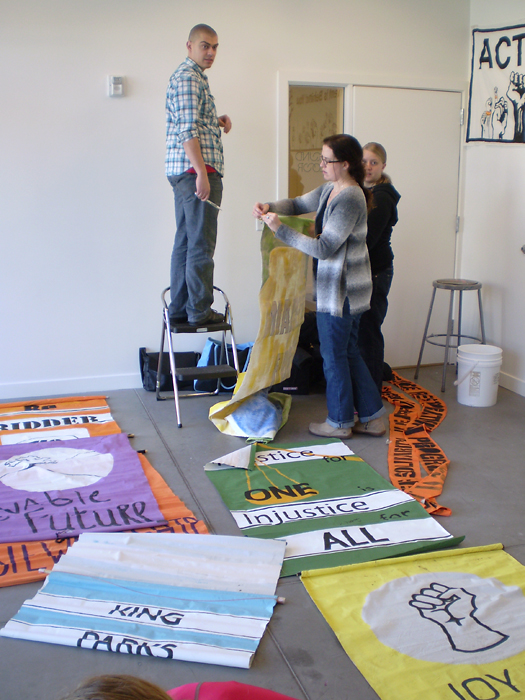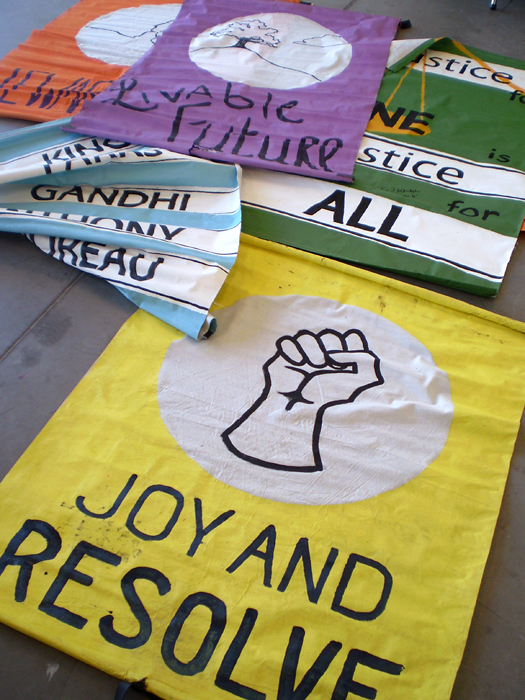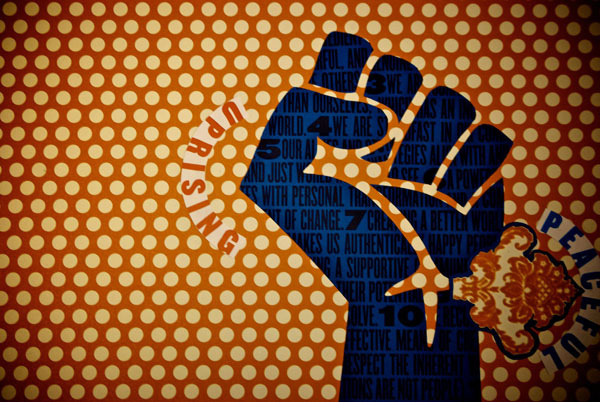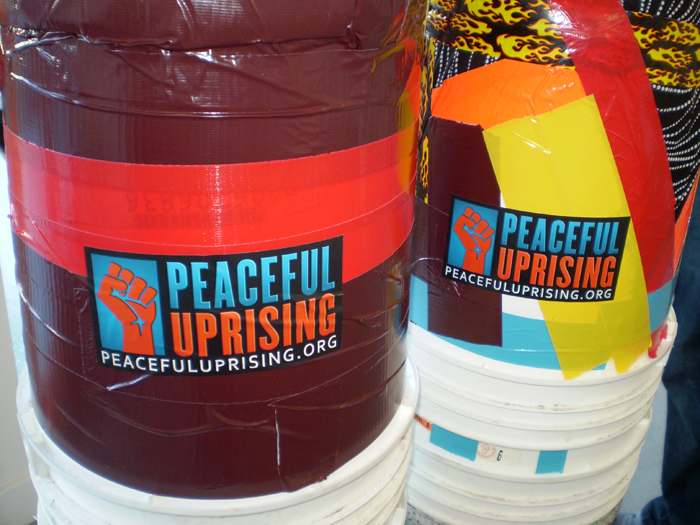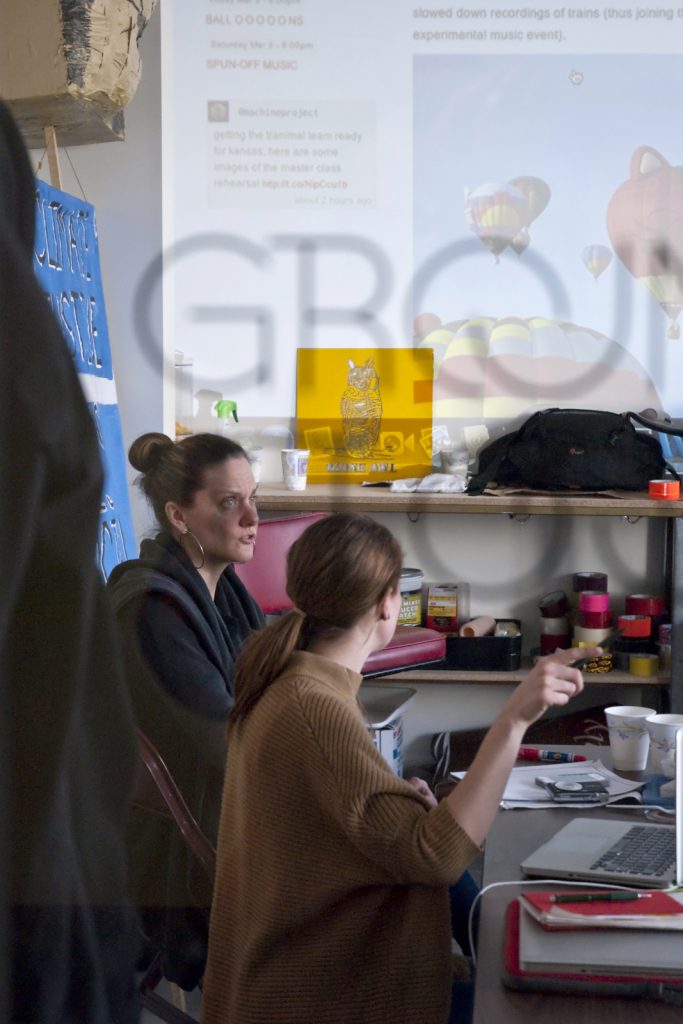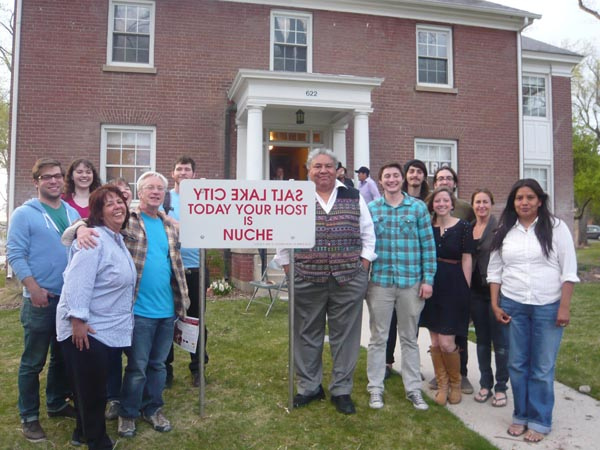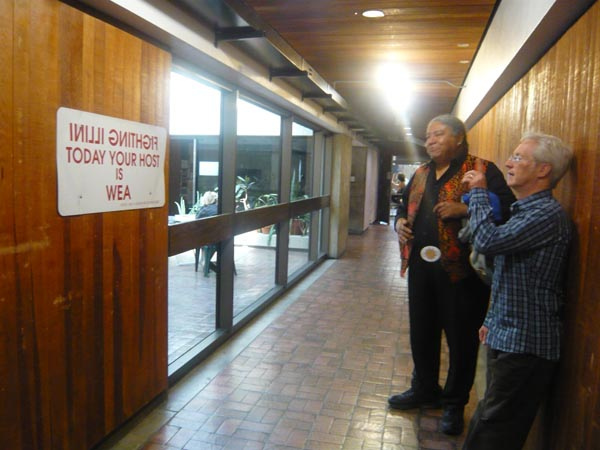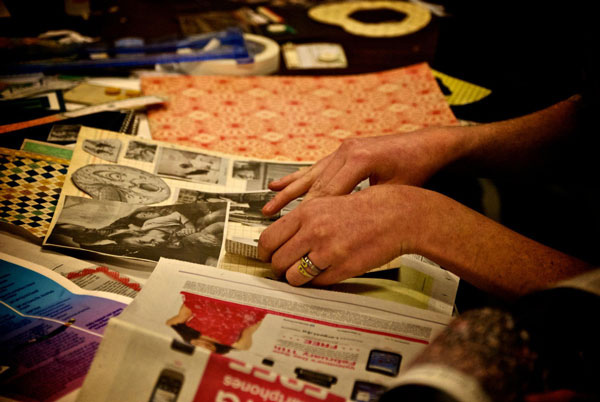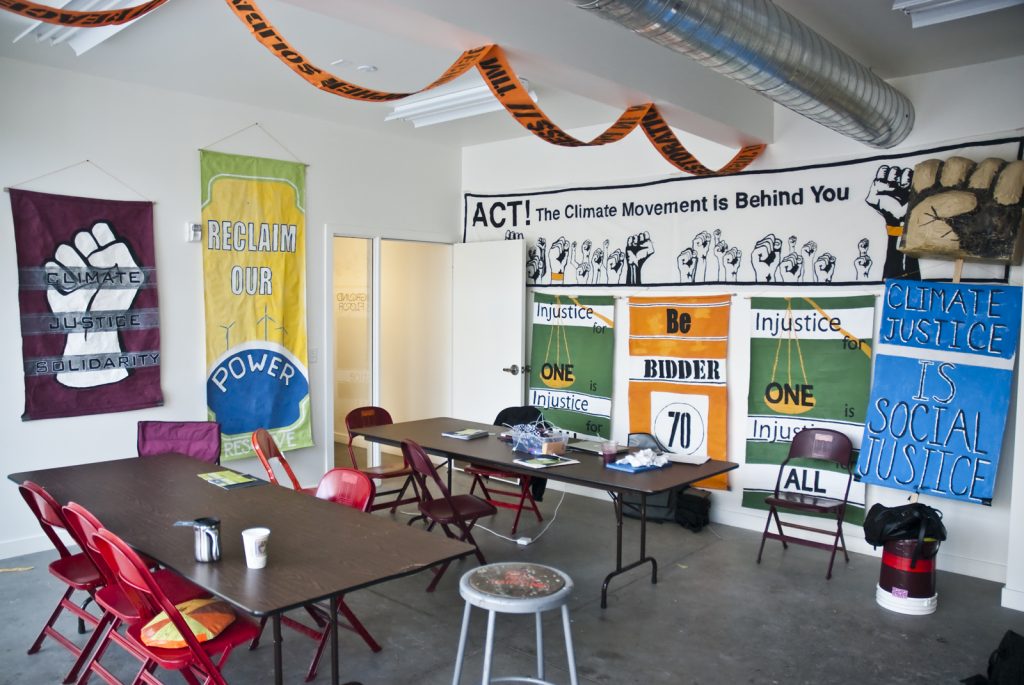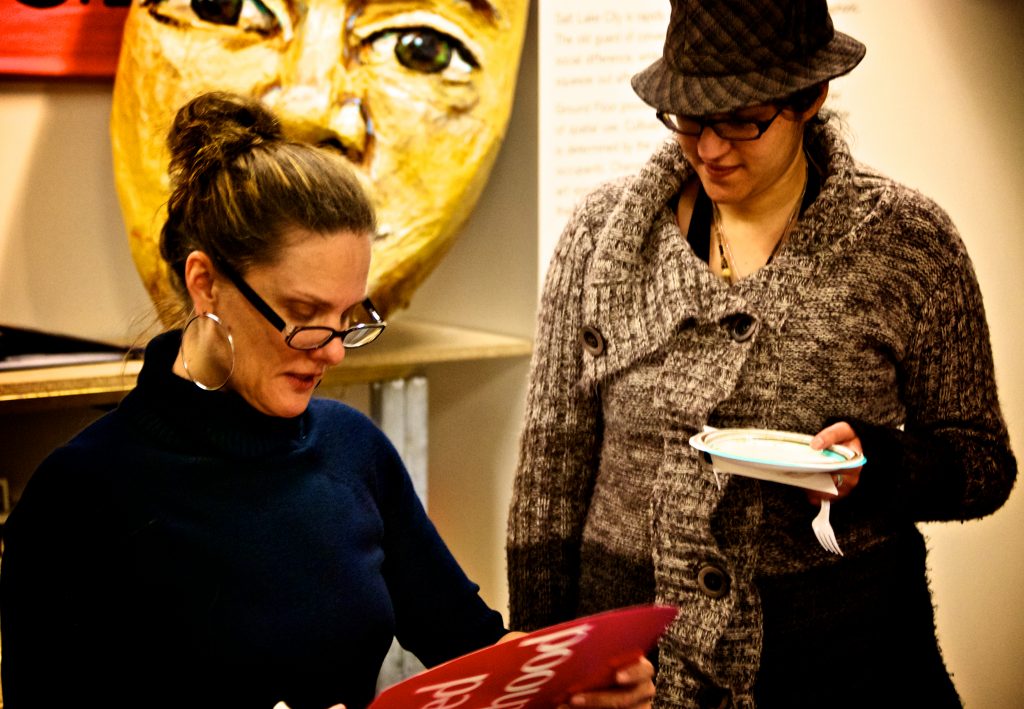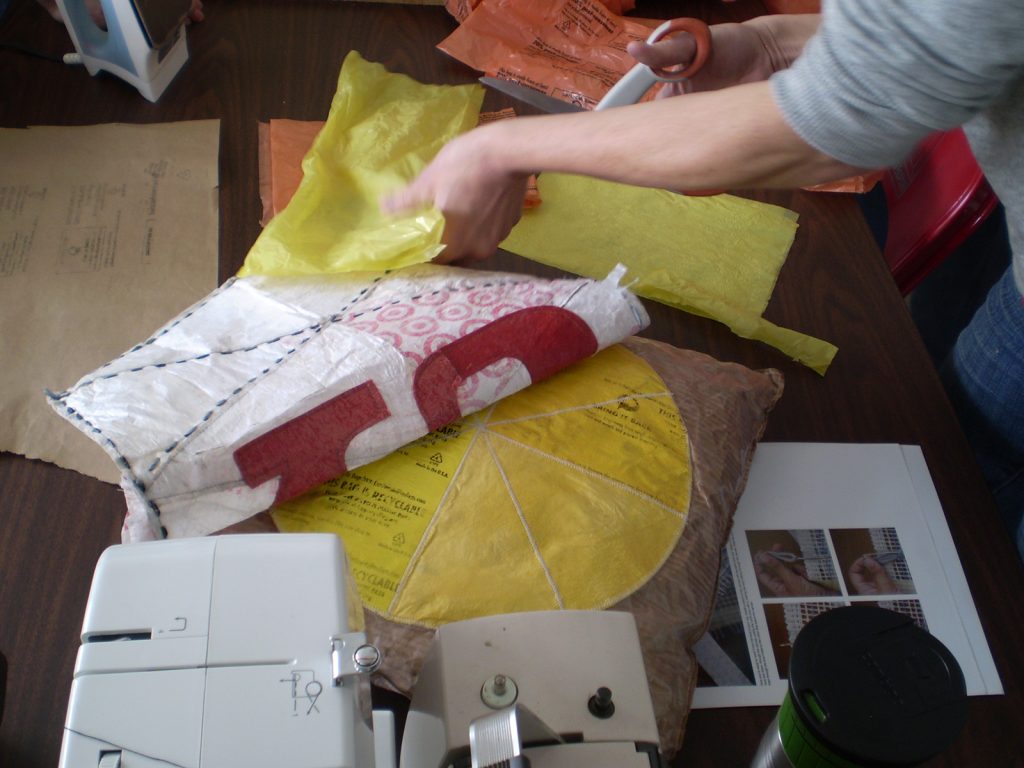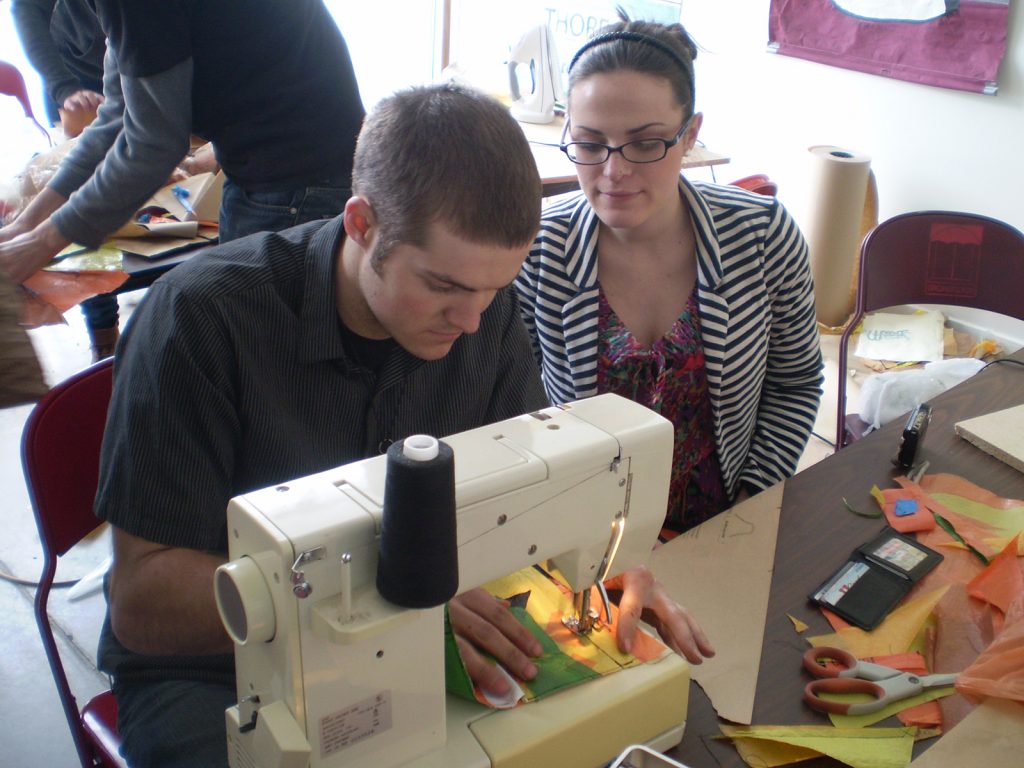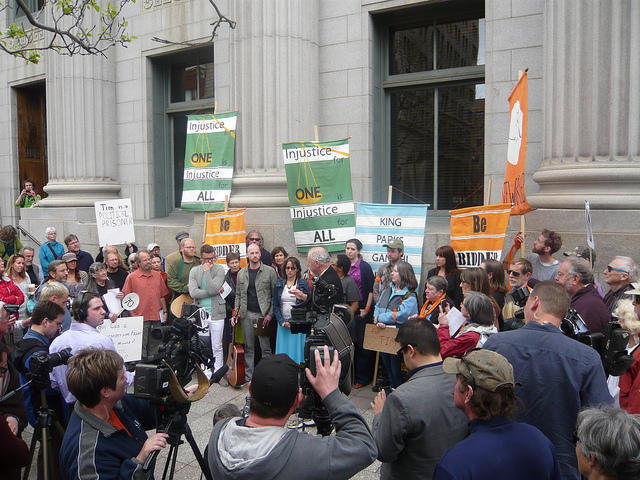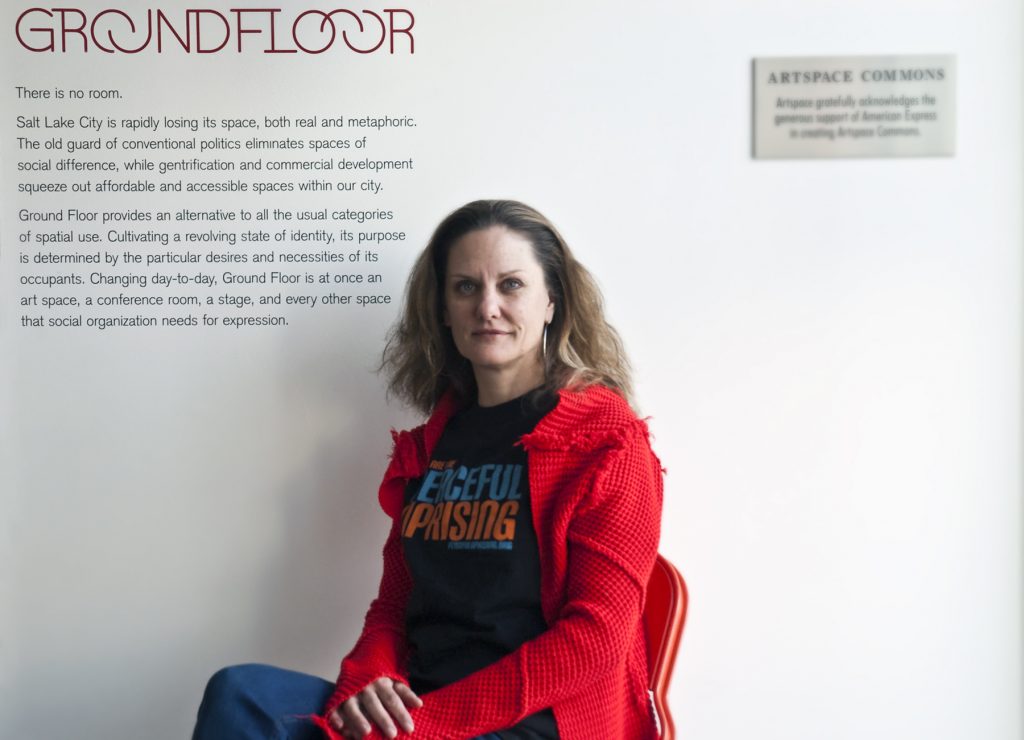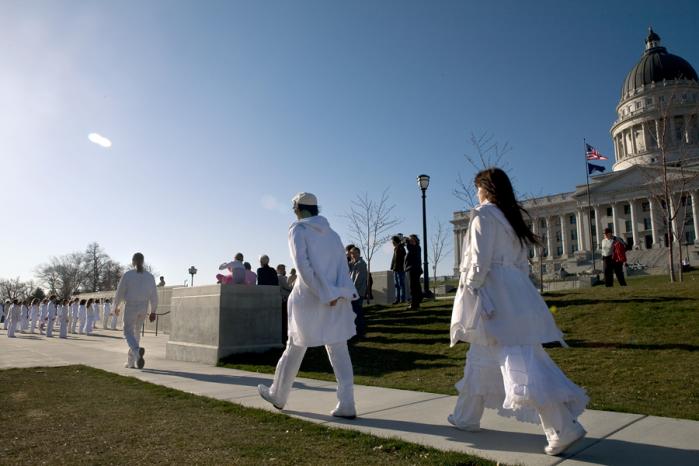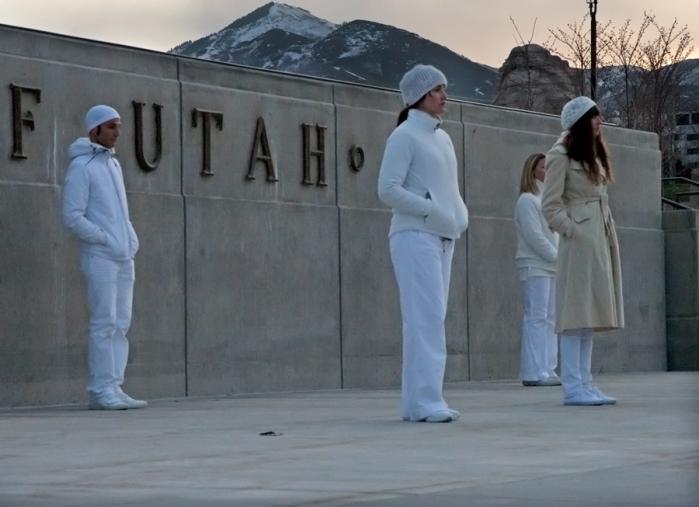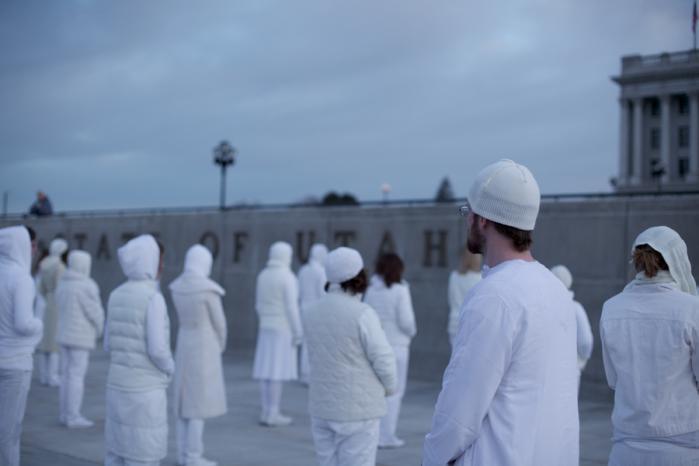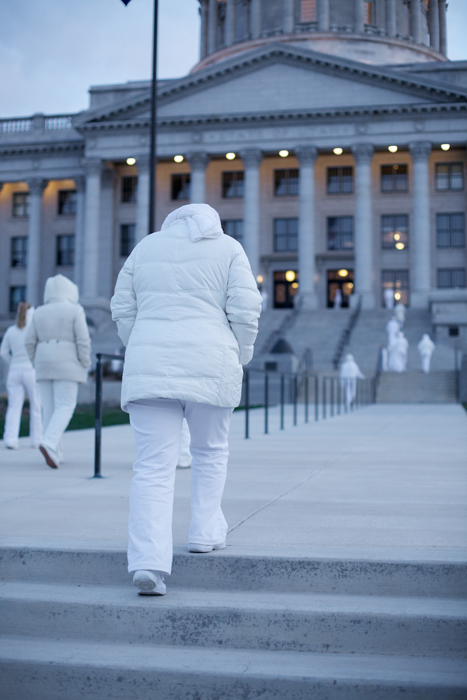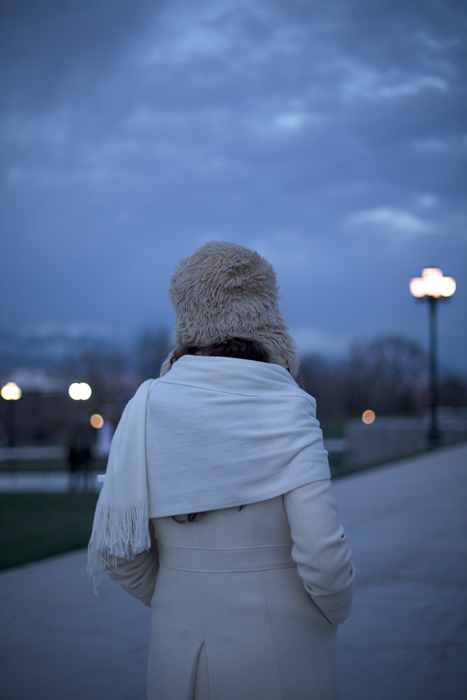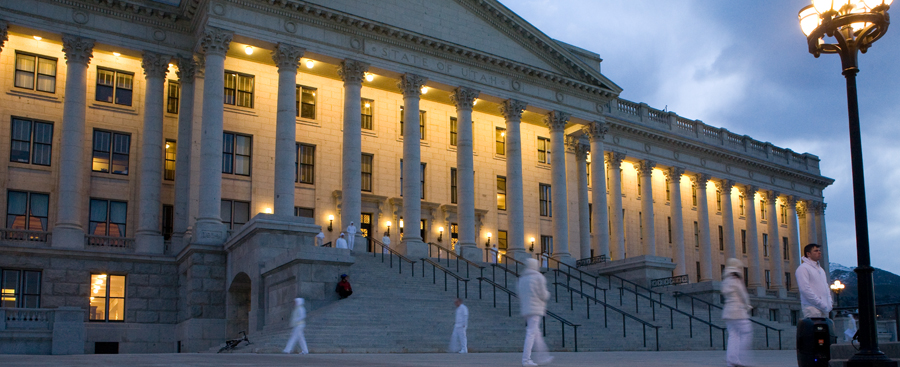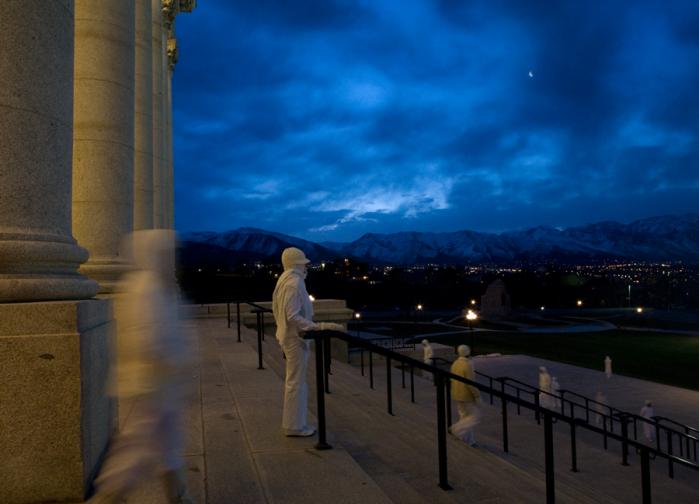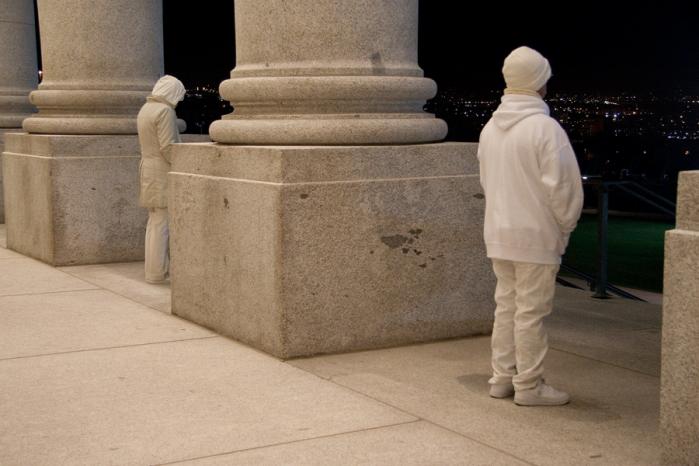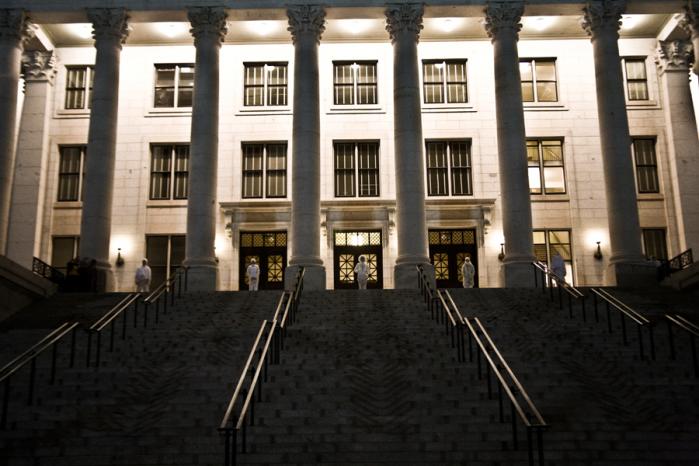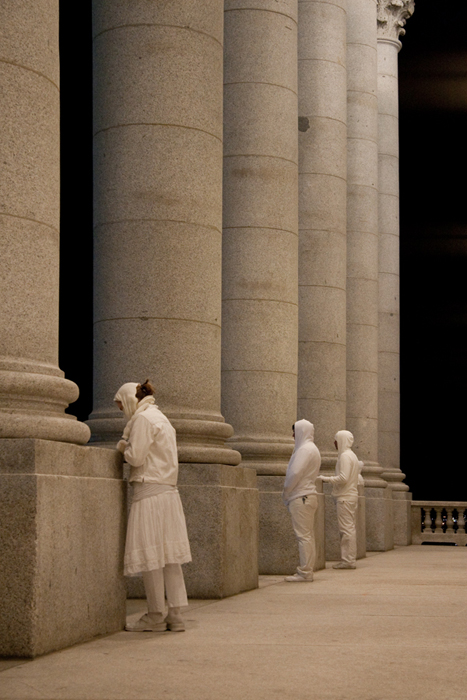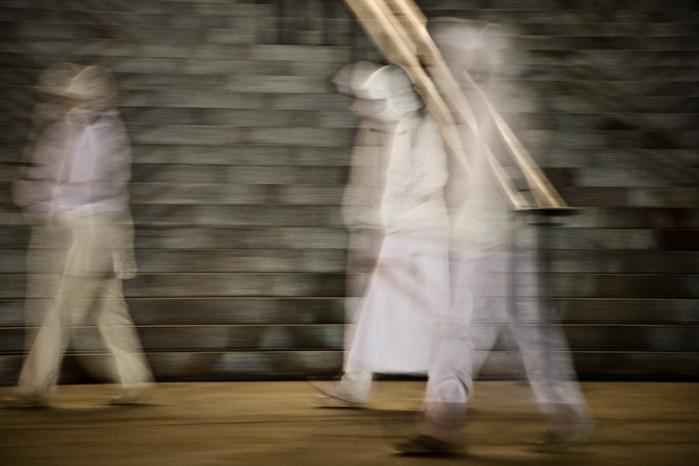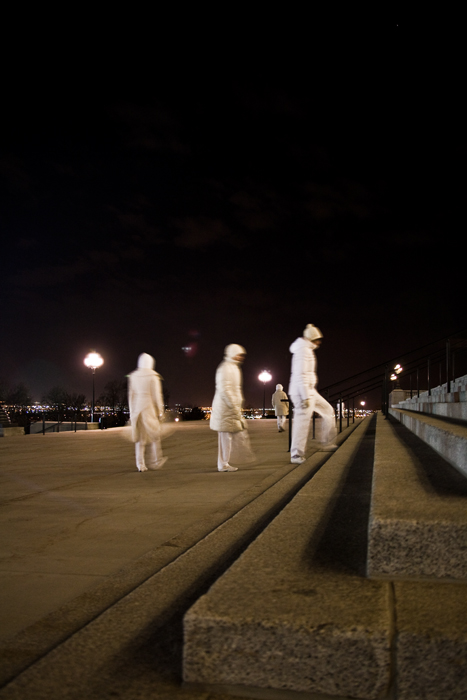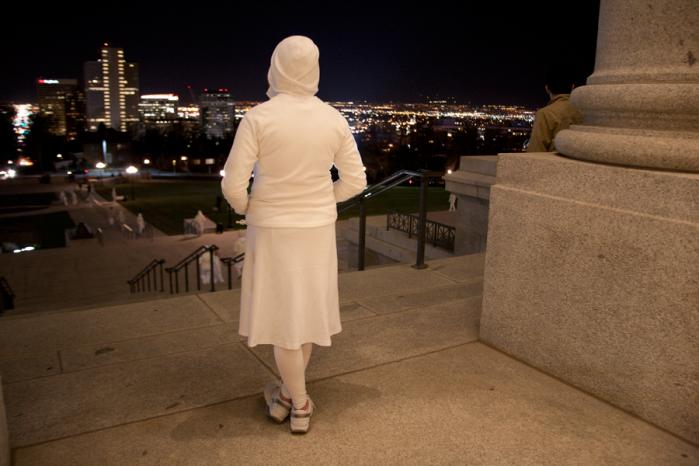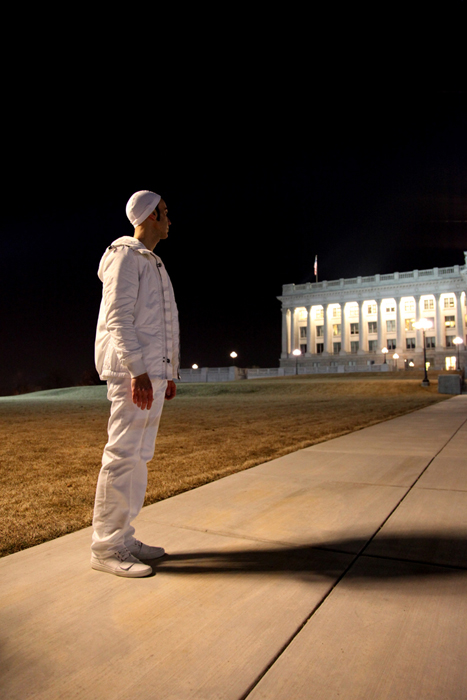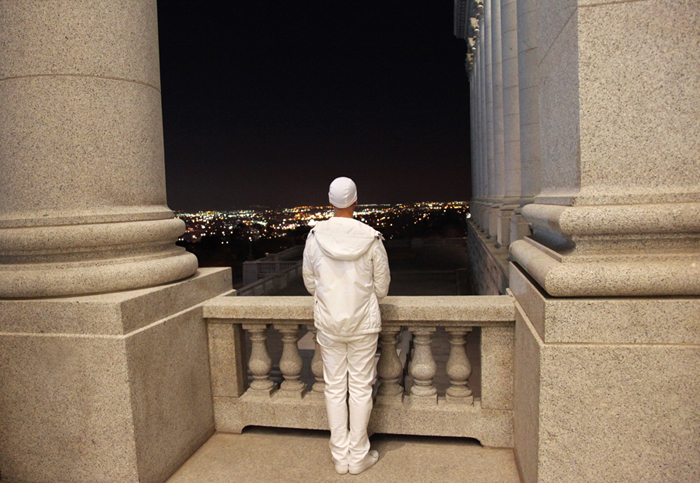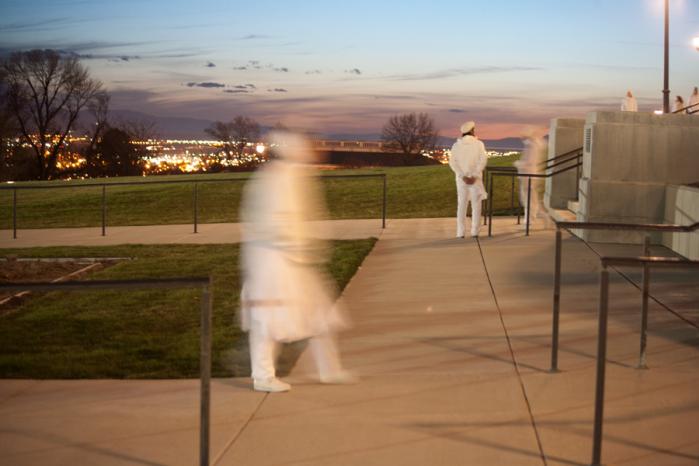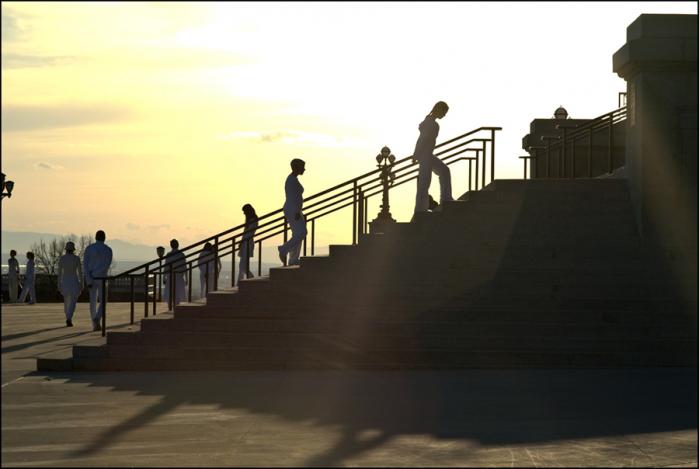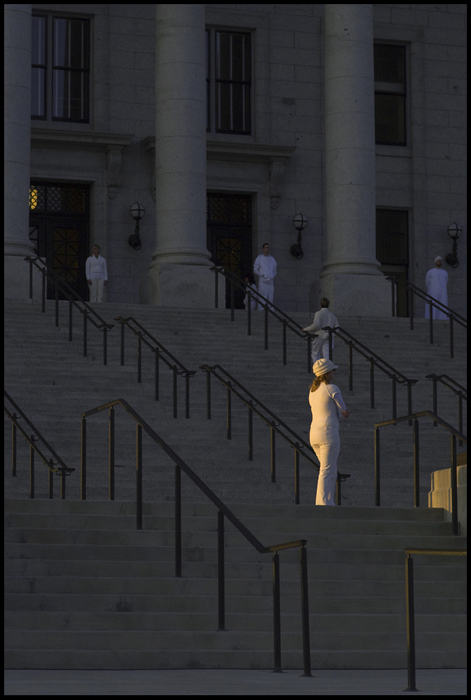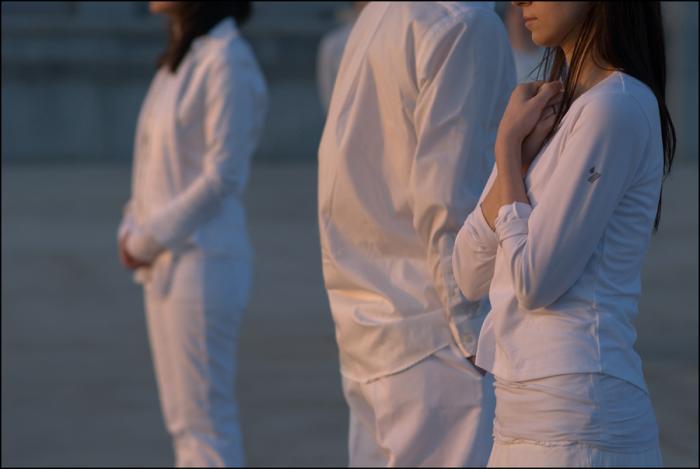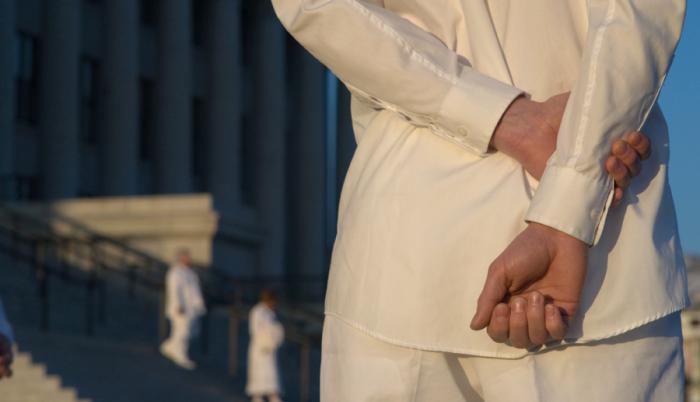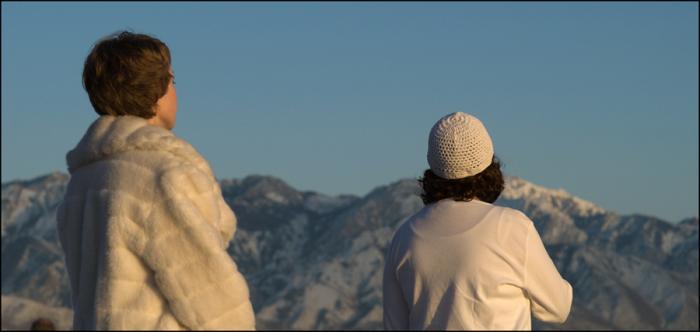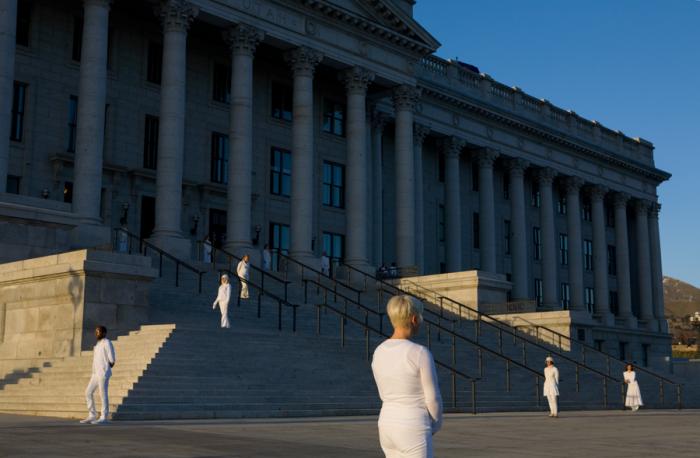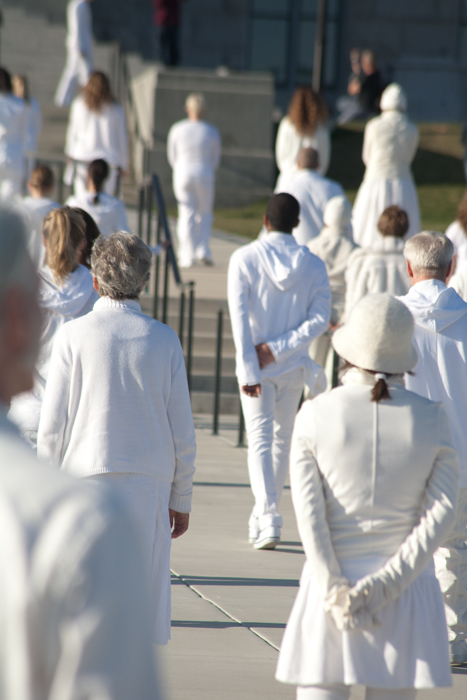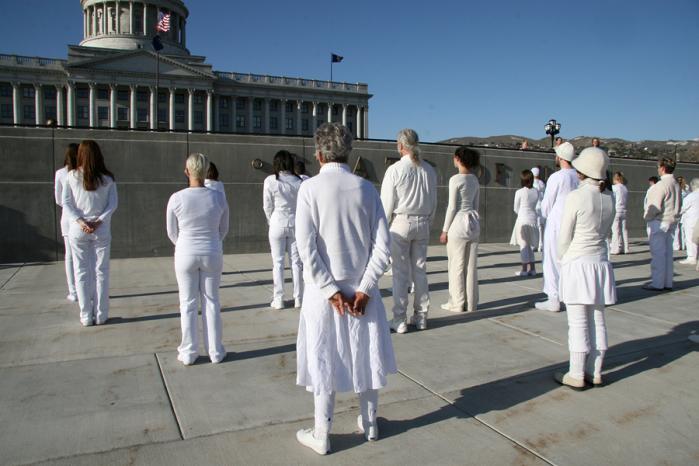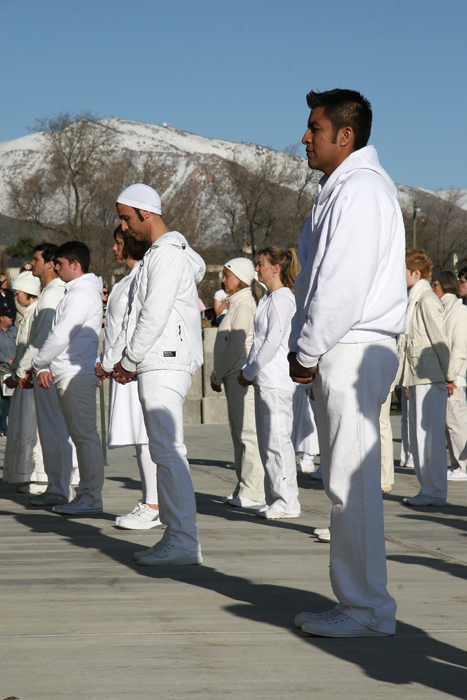The Residency
The Marva and John Warnock biennial residency program has quickly become an important catalyst for dialogue encompassing contemporary issues of art-making, pedagogy, interdisciplinary and collaborative work, art in the community, and art as activism. The program aims to expose students to new, innovative, and diverse contemporary art practices while providing an opportunity for trilateral exchange amongst students, faculty, and the public at large. The artist-in-residence will lead a Master Class that takes the form of intensive workshops throughout the semester.
We are deeply grateful to the Warnock family for their generous support, allowing the department to have ongoing opportunities to engage with artists of this stature. We would also like to thank Dean Scheib, the Marriott Library, and the UMFA through their new ArtLandish series for continued support.
Current Artist in Residence
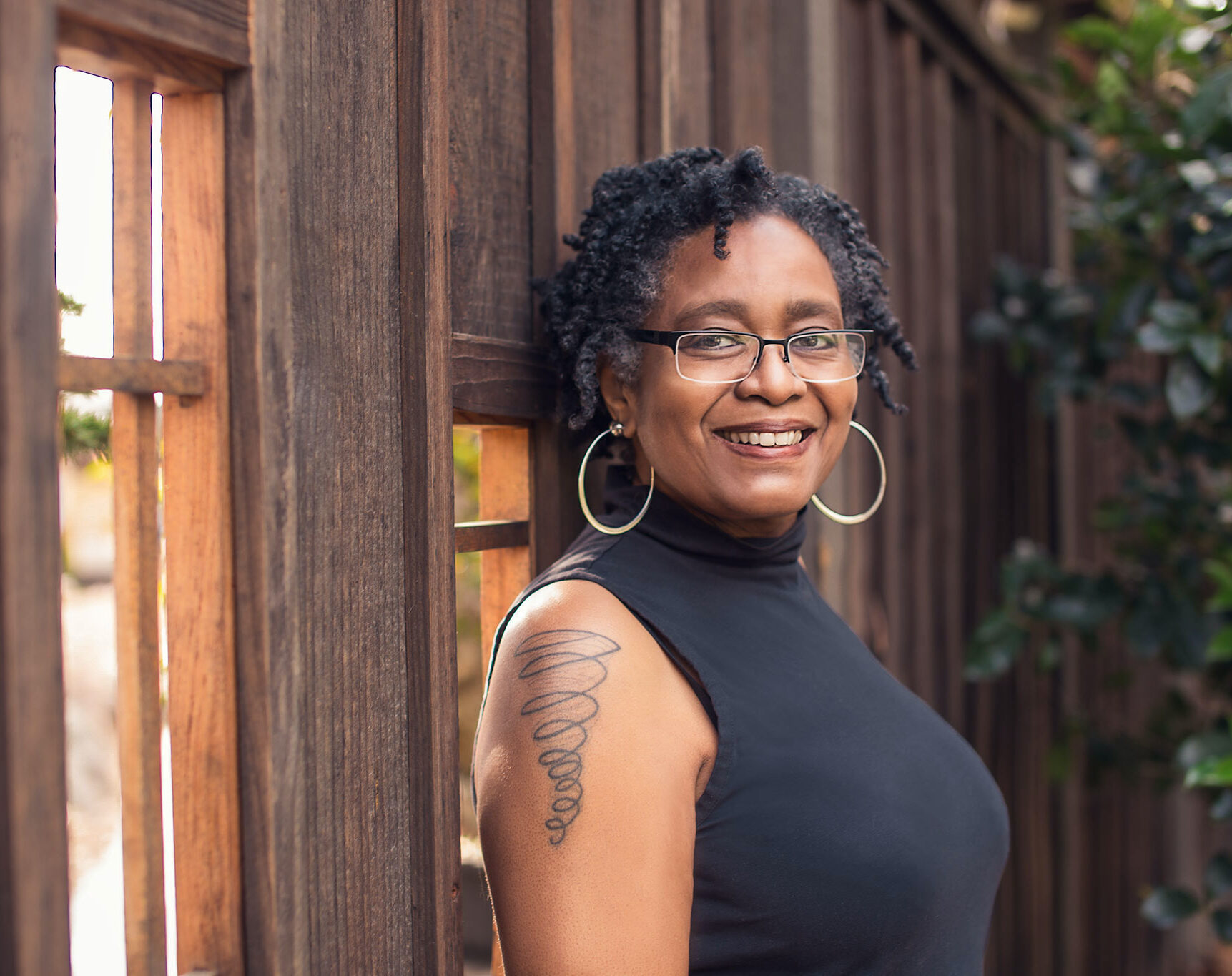
Cheryl Derricotte is a multimedia visual artist, with a preference for the potentials of glass and paper. She is also a licensed city planner who is professionally active at the intersection of art and city planning. She was educated at Barnard College, Cornell University, and the California Institute of Integral Studies. Originally from Washington, DC, she currently lives and makes art in San Francisco, CA. Cheryl’s work is in the permanent collections of the deYoung Museum, the Historic New Orleans Collection, the Oakland Museum of California and the National Association of Homebuilders. She has been featured in the New York Times, the Guardian, and the San Francisco Chronicle.
Cheryl has also served as Artist-in-Residence at the Kala Art Institute, Corning Museum of Glass, Minnesota Street Projects, and the Vermont Studio Center, among many others. Most recently in 2023, she unveiled Freedom’s Threshold, a monument to Harriet Tubman at Millbrae Station in the Bay Area, which is the first sculptural tribute to the abolitionist in glass. https://www.cherylderricottestudio.com/
Warnock Residency Master Class - Spring 2024
The Construction of Memory: Monuments and Utopias
Graduate: ART 6900-001
Undergraduate: ART 4900-001 Spring Semester 2024
3credit hours
Fridays 9:40 – 3:40
Instructor: Cheryl Derricotte, Warnock A-I-R/Visiting Professor
Class size is limited, and Department Consent is required.
Sign-up sheet will be in the ART Office. Open first to Grads and Seniors, and then Juniors, until class is full.
Course Description (synopsis):
The Construction of Memory course is designed to teach students the history of utopian communities, the role of public art in collective memory, as well as how public memorials are designed and commissioned. Three central ideas will set the stage for learning:
- The desire for a more perfect community throughout American history;
- The idea of community benefit in private development which leads to public art, and
- The events, often tragic that lead to the desire for a public memorial; the desire to cement a person in historical memory, often through sculpture.
In 1922, famed American urban historian Lewis Mumford wrote The Story of Utopias. In this book he penned the often quoted phrase: “A map of the world that does not include utopia is not even worth glancing at!” Students will look at examples of utopian communities throughout history and survey the concept of utopia in contemporary art practice. (Ex. Realistic Utopias show currently on view at The Museum of Public Spaces in Denmark). The course will include the history of the 1% for art programs in the US at a local level and the Art-in-Architecture program at the federal level.
We will examine controversy in the public art process by looking at significant works such as: the Vietnam Veterans Memorial, the World Trade Center Memorial in New York City and The Martin Luther King, Jr. Memorial in Washington, DC. Last but not least, students will also learn about artist collectives and collective memory work that artists create outside of traditional government or private philanthropy structures. Examples include the AIDS Quilt, Temple at Burning Man, For Freedoms Billboards, among others.
Throughout the course, students will be reading about utopia, memorials and public art; writing brief essays and making new artist book/print projects. Students will have opportunities to hone their skills in looking at art, writing about art, making art and discussing art.
At the conclusion of this course, students will have the knowledge and skills to actively engage with public art processes in their home communities. They will also have the basis from which to evaluate if they should pursue memorials as part of their practice. Students will leave the course with their own design of a utopian community, public artwork, or memorial in the form of an artist book and/or prints in a custom case created during the course.
Previous Artists in Residence
Clarissa Tossin, 2022
Clarissa Tossin is known for her work in installation, video, photography, sculpture and performance to negotiate hybridization of cultures and the persistence of difference. By embracing semantic displacements in given material cultural ecosystems, Tossin's work reflects on circulation from the level of the body to the global industry.
In the essay Spiritual Geographies, Amalia Mesa-Bains discusses the use of the concept of “Aztlán” in Chicano art as a mythical point of origin for Chicanos featured in the exhibition The Road to Aztlán: Art from a Mythic Homeland held at LACMA in 2001. This was the first major exhibition to trace the art of Mexico and the U.S. Southwest over the course of the pre-Columbian, colonial, and contemporary eras, Chicano art included. Mesa-Bains’s essay is noteworthy in that it stresses the importance not only of a native identity within the Chicano Movement’s cultural and political agency, but also its spiritual dimensions as articulated by Chicano artists in their incorporation of pre-Columbian iconography and re-interpretation of Catholic imagery and syncretic (Indian and European) religious practices.
In the spring 2022 semester master class, Spiritual Geographies, students departed from materials presented in class about this exhibition and essay to develop video works that commented on specific aspects of Utah’s land history, from indigenous approaches to the land (Shoshone, Paiute, Goshute, and Ute Tribes) to 1960s Land Art and beyond.
Kei Ito, 2020
Kei Ito is a conceptual photographer working primarily with camera-less image making and installation art. He earned his MFA from the Maryland Institute College of Art in 2016, following his BFA from the Rochester Institute of Technology in 2014. Ito’s work addresses issues of deep loss and intergenerational connection as he explores the materiality and experimental processes of photography. His work deals with the trauma and legacy passed down from his late grandfather, a survivor of the atomic bombing of Hiroshima and a later anti-nuclear activist, in relation to current threats of nuclear disaster. Ito’s artworks lead the audience on a journey from grief and remembrance to hope. Through his ritualistic image-making, the audience sees how he grapples with his family’s historical connection to nuclear weapons and power.
Franco & Eva Mattes, 2018
Eva and Franco Mattes (1976) are an artist duo originally from Italy, working in New York, and the 5th artists selected for the residency. Their medium is a combination of internet, video and installation. Their work explores the ethical and moral issues arising when people interact remotely, especially through social media, creating situations where it is difficult to distinguish reality from a simulation. Their master class seminar focused on the troubled relation between contemporary art and the Internet. The class analyzed dozens of artworks from the mid nineties to present day to stimulate group discussion around the latest critical issues in contemporary art and media theory.
Mark Brest Van Kempen, 2016
A former Utahn and graduate of the University of Utah (BFA ‘85, MFA San Francisco Art Institute ‘91), Mark Brest van Kempen was the fourth artist to be chosen for this elite residency. He led a master class in the form of intensive workshops where he collaborated with students on several large–scale projects which worked directly with Utah’s beautifully rich and diverse environment as their material. Brest Van Kempen has created a variety of artworks using the landscape itself as sculptural material. From his Free Speech Monument on the UC Berkeley campus to Land Exchange at the National Academy of Art in China, his work explores the range of emotions and issues that are embodied in our complex relationship to the environment, land, and place.
J. Morgan Puett, 2014
J. Morgan Puett’s art, unlike other methods, is less about creating something tangible or audible, and more about the experience of being and coexisting. She specializes in creating spaces where people thoughtfully engage, together, in the daily practices of life: workstyles, she calls them. Her art form is based in a practice called relational aesthetics where the art is the doing of activities—often domestic activities like dining—with others. Puett held a special topics course entitled 'The Emergent Event' that engaged all disciplines through a mode of doing-making-researching-thinking. It covered a broad range of topics and conceptual issues of 21st century socially engaged life, work, comportment, environmental practice—happiness. The studio project functioned as a Mildred’s Lane storefront think-tank around concerns in art and education. Participating students became part of an emergent collective, collaborative and celebrated team that featured in, work on part of a larger-scale project that continued at Mildred’s Lane and exhibited in Chicago in fall 2014.
Andrea Bowers, 2012
With activism as her primary medium, Andrea Bowers employs social justice as a means to explore important causes by engaging with various demographics and institutions. In 2012 Bowers was selected for the Warnock Artist Residency at the University of Utah where she taught an interdisciplinary special topics course during spring semester. Bowers turned her studio space at ArtSpace Commons over to her students, which they named Ground Floor. “They’re turning that into an exhibition space and it’s being offered up free to any social or political organization that needs a place to meet. And any artwork that is exhibited in it has to be socially or politically engaged.”
Ernesto Pujol, 2010
Internationally known performance artist Ernesto Pujol was the first Warnock Residency Visiting Artist. Pujol taught a unique workshop leading to a large-scale group performance along the south steps of the Utah State Capitol. His durational piece lasted 12 hours, from sunset to sunrise. Pujol created it in collaboration with University visual arts and modern dance students, and Utah artist Rosi Hayes, who designed a soundtrack for his meditative piece. Ernesto Pujol’s interdisciplinary performance practice is influenced by German choreographer Pina Bausch’s exploration of cities, American writer Rebecca Solnit’s reflections on walking, Zen Buddhist notions of consciousness, and contemporary conceptual art’s site-specific exploration of landscape and architecture. The artist chose the Utah State Capitol because of its monochromatic beauty, emblematic quality, and vertical monumentality. The 12-hour meditative piece promises to slowly draw a space-within-the-space, temporarily.
